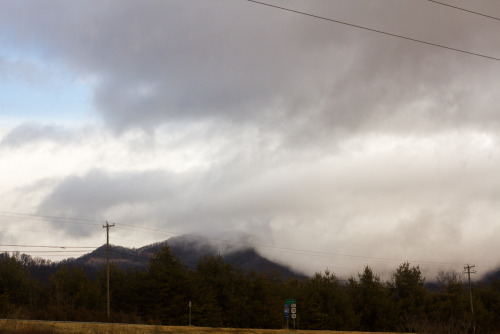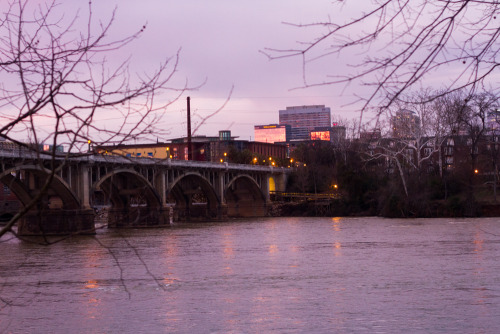#appalachian
If there aren’t potholes big enough to swallow a small child, do you even live in Appalachia?
Blueridge Snow
Contoured waves of white and blue define the southward flowing ridges of the Appalachian Mountains as they stretch through Virginia. The Shenandoah Valley, trapping snow just as it traps time, creates an adjacent but wholly different world in the shadow of our small blue mountains.


1. Bottle trees are used in Appalachian areas to keep spirits from roaming free on your lands.
2. Shards of mirrors into glass mason jars placed in your window sill keep out spirits and negative energies. it should all be Blessed and spelled.
3. Crosses made from a briar bush hung on a front door keeps evil at bay
4. Black pepper around the base of your home keeps people away.
5. Wishbones with your name on it and a string inter twined and buried in your front lawn confuses spells pointed at you.
6. Rose’s and Rosemary burned in your home brings hope and peace into your home.
7. Write your Enemies name down on a red parchment paper and keep tying it into a knotted ball to keep them bound from doing harm to you.
8. Three arrows buried in the true center of your property keep tornados at bay.
9. john the conqueror root wrapped in a purple silk placed under your bed keeps out bad dreams.
(This is all from my family line that was taught to me i just wanted to share with others that come from the same background as my family.)

Kanawha County artist Charly Jupiter Hamilton creates vibrant, colorful, and energetic works of art in a variety of media, including, but not limited to, paintings on canvas, sculptures, and various applications of printmaking. Recently, he has even added a large-scale public art piece to his creative repertoire, the “West Side Wonder Mural,” which is located in Charleston, West Virginia. The enormous painting, which measures 30 x 60 feet, covers the side of an entire building on Charleston’s West Side. That piece, like many of Hamilton’s other exuberant works, explores unique visual perspectives and true-to-life narratives using lively and somewhat unexpected assortments of colors and shapes.
According to his biographical statement, Hamilton’s various influences include “growing up on a small dairy farm with a Hungarian mother, brother, and strong headed sisters; his travels and service as a Gunner’s Mate Petty Officer in the U.S. Navy during the Vietnam War; studying art history and painting at UNC-Chapel Hill; painting and traveling in Mexico, Central America, India and the United States; and his thirty plus years at home among the ‘wildlife’ of West ‘By God’ Virginia.”
This year, Charly’s unique vision and creative style earned top honors from Tamarack’s The Best of West Virginia Open Juried Exhibition, where his piece Bases Loaded: Summer Evening in Power Park, Charleston, WV (pictured above) was named the David L. Dickirson Best in Show winner by the 2016 jury team. In their statement, they felt Charly’s painting was “an energetic piece with a complex, well integrated design overlaid with a Folk Art charm.”
Please join us in congratulating Charly on earning this year’s David L. Dickirson Best in Show Award from Tamarack’s annual The Best of West Virginia Open Juried Exhibition.

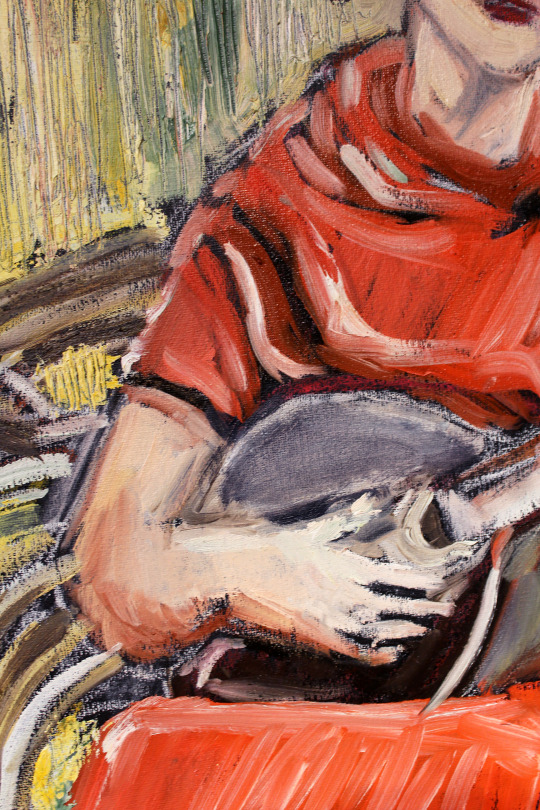


Kanawha Co. artist William K. Lightner fondly recalls receiving an art set for Christmas when he was seven or eight years old. He best remembers a flip book that showed the evolution of simple drawn lines to a finished charcoal rendering of a bulldog, a progression that reminded him of watching a short animated cartoon. Though the book and the kit are now gone, the seed had already been planted for Lightner’s lifelong fascination with visual art.
Lightner spent his grade school years capturing hot rods, planes, and tanks in his sketches as well as super heroes from his extensive comic book collection. Over time, his notebook covers and sketchbooks filled with original comic storylines until one day, a “curmudgeonly” art instructor told him it was time to stop cartooning and learn how to draw. Not long after, he earned third place in a youth art contest with a pen and ink rendition of a baby possum.
Ligthner had planned to major in Art Education after graduation, but instead settled on Social Work and Psychology as an academic focus. He found it to be a good fit, though he continued to draw advertisements, comic strips, and editorial cartoons for a local news publication. While he enjoyed exercising his creative passions, art-based projects eventually took a backseat to his career as a counselor for the West Virginia Division of Rehabilitation, a position he held for 26 years.
In the year 2000, the onset of a serious illness changed everything for Lightner. After numerable medical treatments, and support from his wife Libby, he emerged from his prolonged health crisis and finally determined he would commit to creating artwork. Since that time, Lightner has found a strong connection with oil painting, and began to participate in various art associations, juried shows, art walks, and festivals. Though he continues to deal with health issues, he has taken advantage of an early retirement, and now has little excuse not to paint every day.
This year, Lightner has earned recognition from Tamarack’s annual The Best of West Virginia Open Juried Exhibition for his diptych painting Duet,which took third place honors. According to exhibition jurors, the piece “…captures an authentic moment in time, a snapshot in paint.”
Congratulations to William K. Lightner for earning 3rd place in Tamarack’s 2016 Best of West Virginia Open Juried Exhibition.
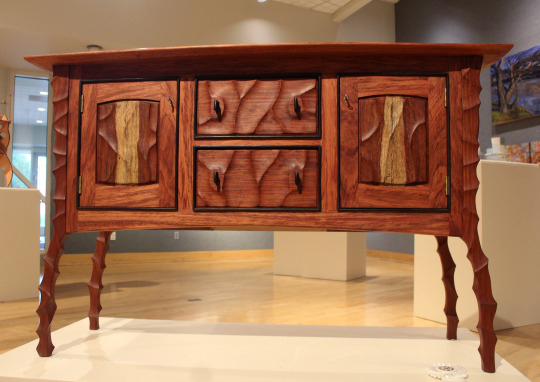


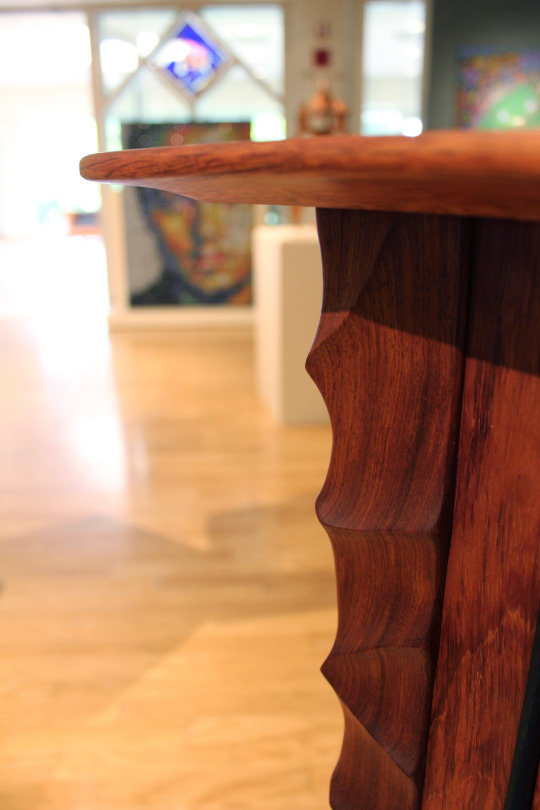



John Wesley Williams is a studio furniture maker from Greenbrier County, West Virginia whose work is represented in private and corporate collections throughout the United States as well as galleries in the south and north east regions. His furniture has been featured in numerable publications and has earned many “best in show” honors from exhibits hosted throughout the country.
According to Williams, “this work is above all about reverence for the material, both for its stunning beauty and tactile nature. It’s furniture that has to be touched and used. Work this excellent demands an equally enduring design and technique. Traditional methods of joinery, and the age old methods of construction, combine to deliver a piece to be enjoyed for generations.”
Williams considers each piece an exploration that builds upon past works. “One can see the importance to the artist in each piece, from the hand selection of the woods to the incredible finishing process that does not detract from the material or hide it beneath layers of artificiality. The work demands of the builder the highest level of craftsmanship.”
Williams is a one person operation based out of his studio, which is located high atop Butler Mountain. “When I am not in my shop, I am usually out searching through mills for the wood that will inspire my next design.”
Congratulations to John Wesley Williams for earning an Award of Merit from Tamarack’s annual “Best of West Virginia Open Juried Exhibition” for his work “Bubinga Sculpted Console Cabinet” (pictured above).
To learn more about John Wesley Williams, please visit his website:
http://johnwesleywilliamsfurniture.com
Every year, TAMARACK: The Best of West Virginia and the Tamarack Foundation for the Arts celebrate West Virginia artists and artisans by showcasing their creativity and talent in this special juried competition. This show, which opens West Virginia Day weekend, is the only exhibition hosted by the David L. Dickirson Fine Arts Gallery that can be entered by any artist or artisan who is a West Virginia resident. Participants compete for five monetary awards, all of which are made possible through the generosity of the Tamarack Foundation for the Arts and their donors.
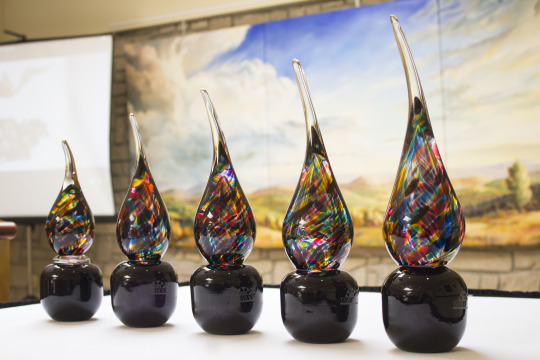
Trophy set created by Tamarack’s resident glass artisan John DesMeules
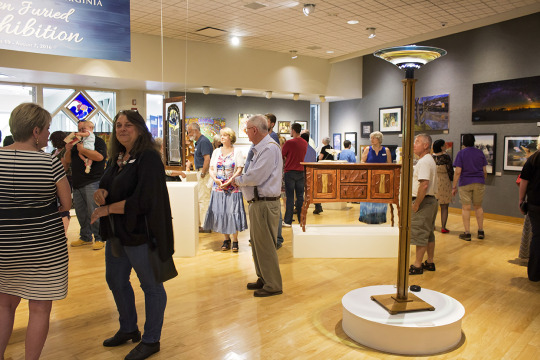
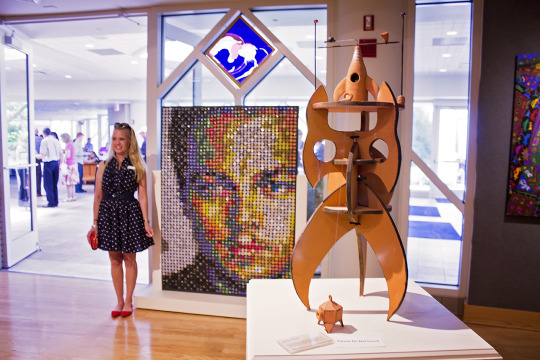
Front: “Gravity Drive Double Flying Pendulum Escapement Mechanism Rocketship” by Wood Co. artist Jonathan Walsh

Guests admiring “Hamsa” - stained glass panel by Chris Dutch, Kanawha Co.

Kanawha Co. artist Charly Jupiter Hamilton claiming his David L. Dickirson Best in Show award for the 2016 “Best of West Virginia Open Juried Exhibition”
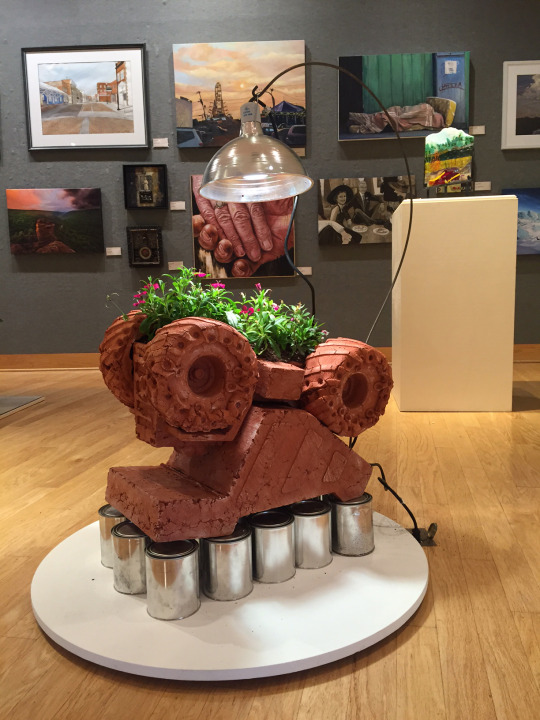
“Dump Truck on Cans with Flowers and Grow Lamp” by Mercer Co. artist Jamey Biggs
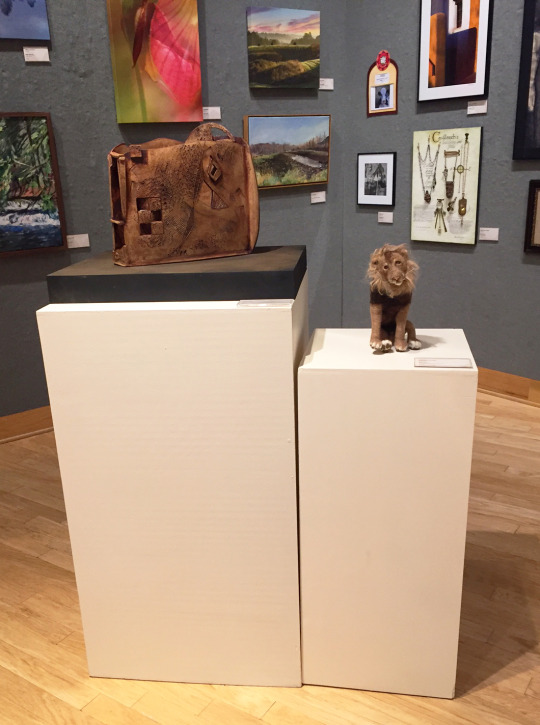
Left: “3D Architectural Composition” by Homaira Ahmed, Putnam Co.
Right: “Cyrus” by Lleona Chew, Jefferson Co.
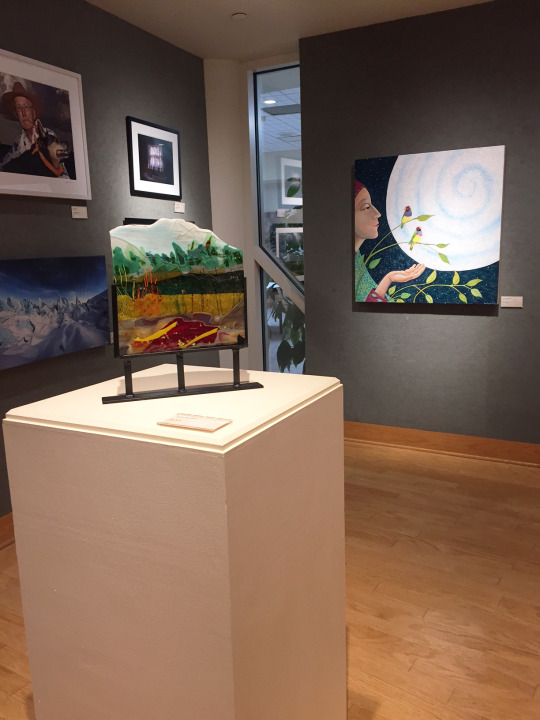
“Red River” by Cabell Co. artist Leona Mackey

Left: “Concave Funkiness” by Randy Selbe, Kanawha Co.
Right: “Honoring Air & Space (#4 of Series) by Diana Pittis, Raleigh Co
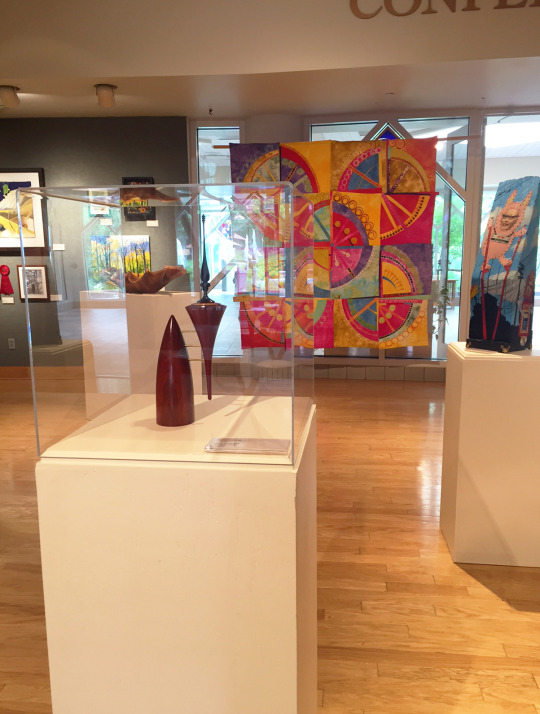
“Jack of Hearts” by Kanawha Co. artist Byron Young
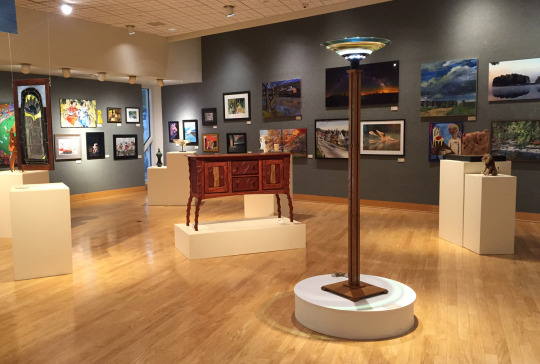
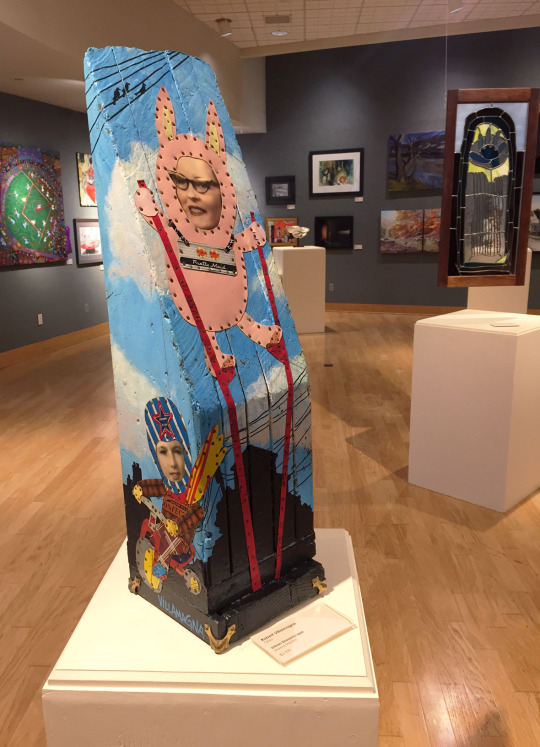
"Urban Dreamscape” by
Ohio Co. artist Robert Villamagna


“Bubinga Sculpted Console Cabinet” by John Wesley Williams of Greenbrier Co. This piece won the Award of Merit from this year’s exhibition.

William K. Lightner posing with his dyptich “Duet,” which was awarded 3rd place in this year’s “Best of West Virginia Open Juried Exhibition”
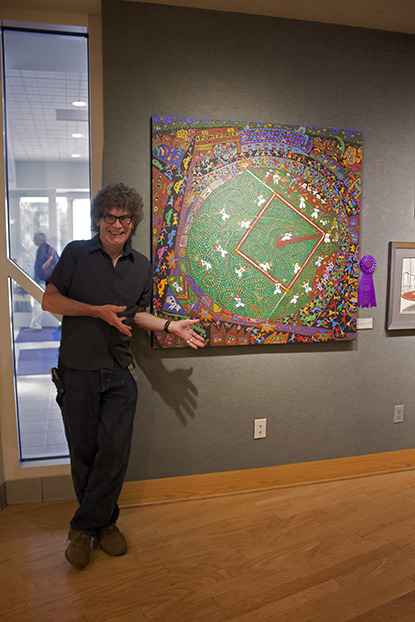
Kanawha Co. artist Charly Jupiter Hamilton with his piece “Bases Loaded: Summer Evening in Power Park (Charleston, WV). which was awarded the 2016 David L. Dickirson Best in Show award for the 2016 "Best of West Virginia Open Juried Exhibition”
Join us in the David L. Dickirson Fine Arts Gallery to view our newest exhibition “Narrations: Stories in Art.” In Narrations, juried Tamarack artists and artisans from across West Virginia share the stories that inspired them to create the works on view. From mixed-media collages and paintings to photographs and glassworks, Narrations is a mosaic of unique experiences told in visual art, the collection of which attests to the varied influences that inspire our region’s talented artist community
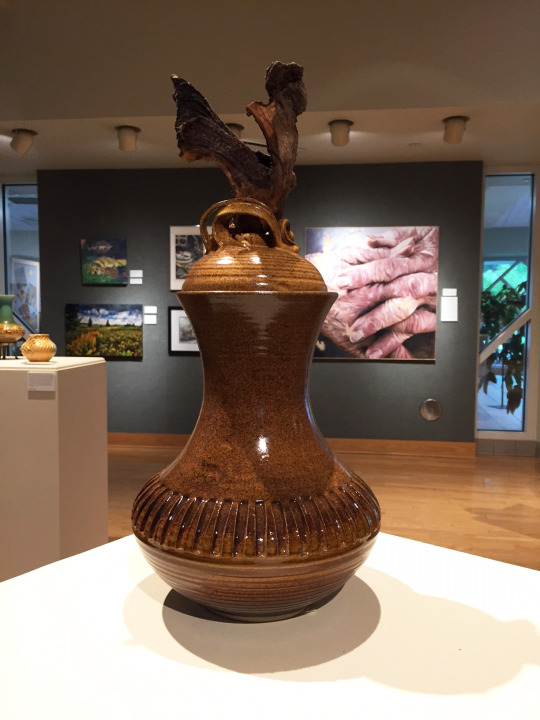
Ceramic pot by Randy Selbe of Kanawha Co.

Two ceramic works by Kanawha Co. potter Randy Selbe

Glass platter by Martha Reynolds

Left to right: “Nick, Legacy of the Lines” by Tiera Floyd, “October at Otter’s Creek” by Kevin Woodcock, “Dark at the Top of the Stairs” & “Pilot House” by Vernon Howell, and “Terpsichorean” by Amy Stout


“World Garden” by Homaira Ahmed

Clockwise: “Sparky” and “Making Tarts” by Barbara Marsh Wilson, “Rosie: Legacy of the Lines” by Tiera Floyd, “McKinley” & “Park Street” by Jamie Lester, and “On a Clear Day” by Ed Rehbein
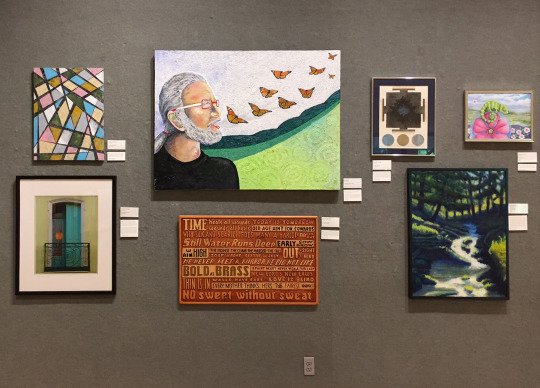
Clockwise: “Random Sharp #21″ by Tsukasa Kambara, “A Perfidy of Butterflies” by Jorn Mork, “Parvati’s Heart” by Meredith Gregg, “Chameleon” by Marianne Deaver, “Slabcamp Run” by Kevin Woodcock, “Some More Sayn’s” by Vernon Howell, and “Aqua Doors, Ceret” by Deborah Herndon
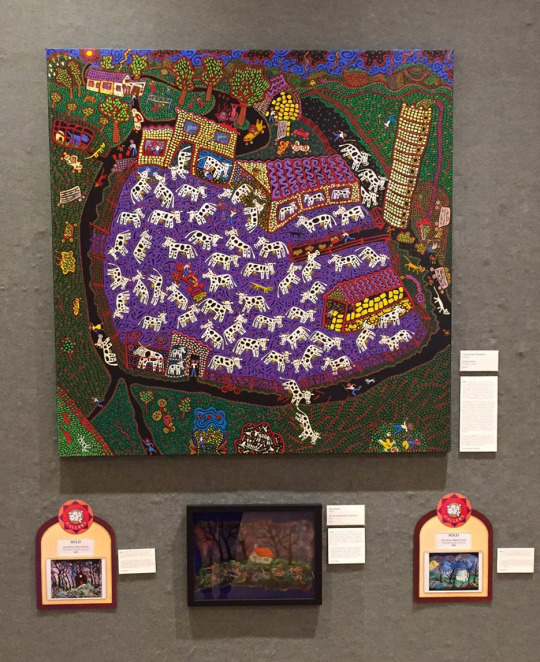
Above: “Troutman Farm” by Charly Jupiter Hamilton; Below: “The House with the Orange Roof” by Ann Grimes




Above: “Lost in the Weeds” and “Matador” by JP Owens
Below (Left to Right) “Bulldog Lady,” “The World’s Smallest Policeman,” and “Sword Swallower” by Robert Villamagna and “Building a Nest” by Barbara Marsh Wilson
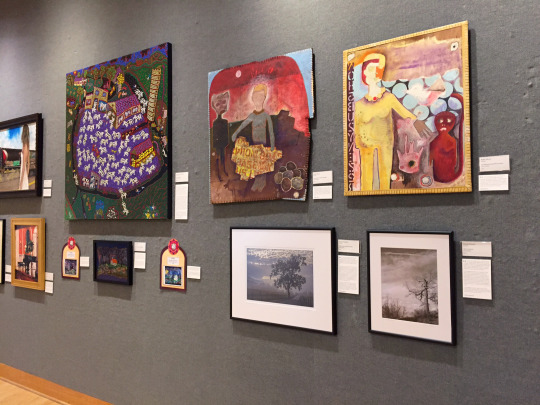
Above: Mixed Media Works by Robby Moore; Below: Photographs by Daniele Piasecki
Join us as we celebrate the enduring connection between mentor and student in this special art education showcase. In “Continuum,” six collegiate professors who live and work in West Virginia present their art alongside that of a former student. Through their six unique sets of stories and works, we are offered a chance to explore the mutual exchange of knowledge, encouragement, and growth that flows between teacher and student and the strength that is present in West Virginia’s collegiate art departments.
“Continuum” features selected works by the following professor/former student pairs:
-Jamey Biggs and Mandy Lester, Concord University
-Sonya Evanisko and Sarah Loy, Shepherd University
-Mary Grassell and Brian Jarrell, Marshall University
-Mark Tobin Moore and Nicole Suptic, Concord University
-Jack Sheffler and Kylene Babski, Concord University
-Robert Villamagna and Jonathan Walsh, West Liberty University



Left: “The Nature Table Book” by Mary Grassell (Professor of Graphic Design, Marshall University)
Right: “High Alert” by Marshall University Alumni Brian Jarrell

Far Left and Right: Acrylic Paintings on Panel by Sonya Evanisko (Professor of Art / Coordinator of Painting & Drawing at Shepherd University). In the center are mixed-media works by Sarah Loy, Shepherd University alumni and Sonya’s former student.

“High Alert” - ballpoint pen drawing by Marshall Alumni Brian Jarrell. Brian is exhibiting in “Continuum” alongside former professor Mary Grassell
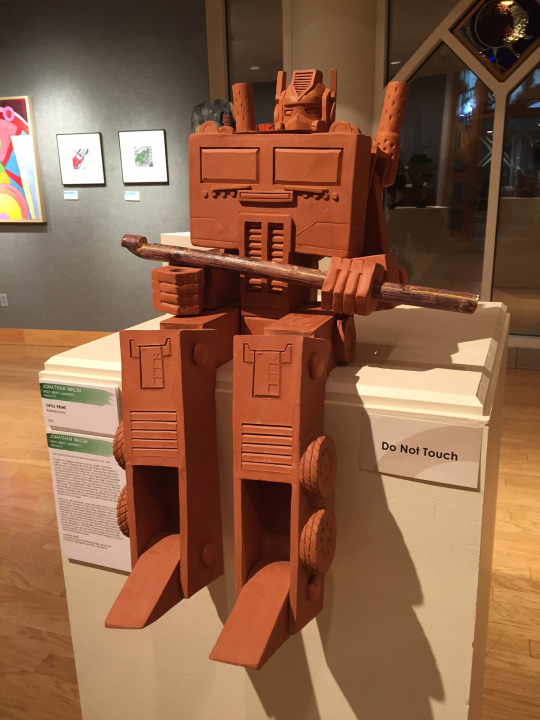
“Opus Prime” - Earthenware sculpture by West Liberty Alumni Jonathan Walsh. Jonathan is exhibiting in “Continuum” with his former professor Robert Villamagna.

Detail of “Bull Dozer with Shard Pile” - Collaborative sculpture by Jamey Biggs of Concord University and his former student Mandy Lester

“Terra Cotta Drumblebee” by West Liberty Alumni Jonathan Walsh is enjoying his view of Robert Villamagna’s mixed media works. Robert, Jonathan’s former instructor, teaches Art at West Liberty University and is the director of the Nutting Gallery.
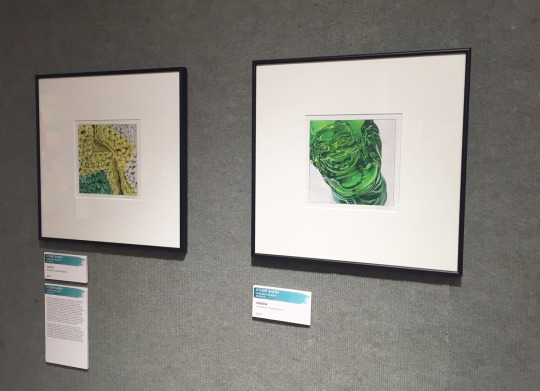
Left - “Stitch” Right - “Buddha” Marker/Colored Pencil drawings by Concord Graduate Kylene Babski. Kylene is exhibiting in “Continuum” with former professor Jack Sheffler (Chair of the Division of Fine Arts / Associate Professor at Concord University).

Far left and right: Marker/Colored Pencil drawings by Kylene Babski (Concord Alum). Center: “Self Portrait” by former professor Jack Sheffler (Chair of the Division of Fine Arts / Associate Professor at Concord University).

“Thumb Head” - Woodfired Porcelain Sculpture by Concord Alumni Mandy Lester. Mandy is exhibiting in “Continuum” with former instructor Jamey Biggs
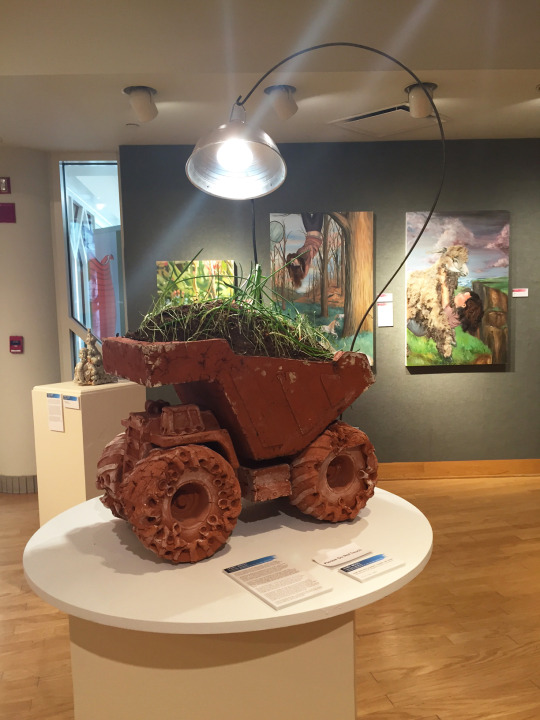
“Dumptruck with Jalapenos, Cilantro, and Onions” after a few days in the sun by Jamey Biggs (Associate Professor of Art / Gallery Director, Concord University). Jamey is exhibiting in “Continuum” with his former student Mandy Lester.
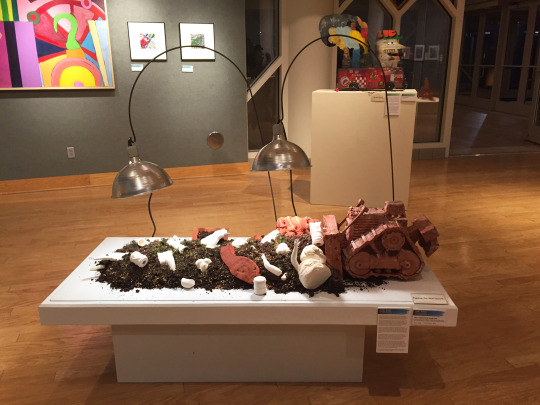
“Bull Dozer with Shard Pile” by Jamey Biggs (Associate Professor of Art / Gallery Director, Concord University) and Mandy Lester (Graduate, Concord University)
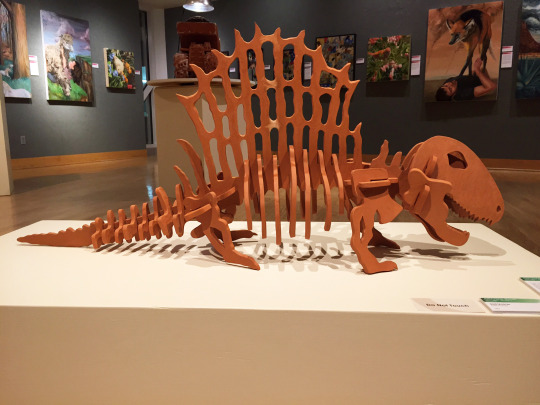
“Dimetrodon” - Earthenware sculpture by West Liberty Alumni Jonathan Walsh. Jonathan is exhibiting in “Continuum” with his former professor Robert Villamagna.


Mixed-media works by Mark Tobin Moore (Instructor of Art for Concord University). Mark is exhibiting in “Continuum” alongside Concord grad Nicole Suptic.

“Nature Table Book” - a handmade book/wood block print by Mary Grassell (Professor of Graphic Design at Marshall University). Mary is exhibiting in “Continuum” with her former student Brian Jarrell.
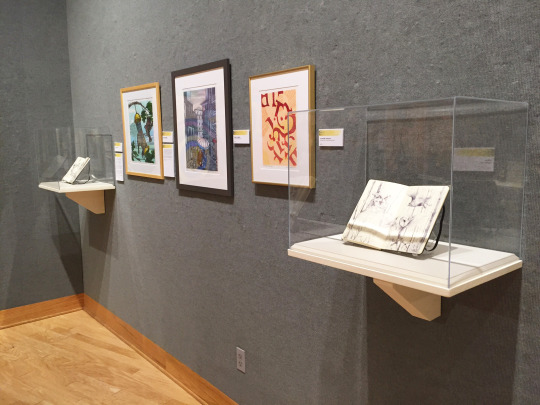
Sketchbook drawings in ballpoint pen by Brian Jarrell (Marshall Alumni) flank prints created by his former professor Mary Grassell (Professor of Graphic Design, Marshall University).

Left - “Mischievous (Chance)” Right - “Brain Freeze (Self)” - Acrylic portraits by Concord graduate Nicole Suptic. Nicole is exhibiting in “Continuum” with former professor Mark Tobin Moore (Instructor of Art for Concord University).
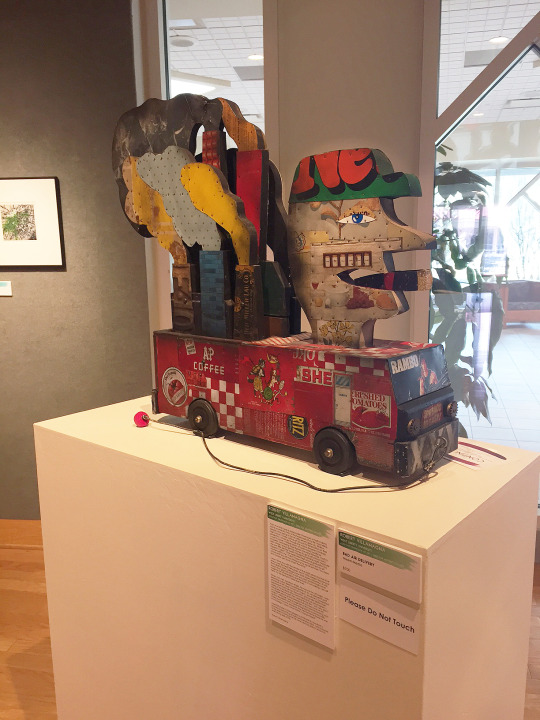
“Bad Air Delivery” - Mixed Media work by Robert Villamagna (Assistant Professor of Art
Director, Nutting Gallery, West Liberty University). Robert is exhibiting in “Continuum” with former student Jonathan Walsh (West Liberty Alumni).

Far Left and Right: Acrylic Paintings on Panel by Sonya Evanisko (Professor of Art / Coordinator of Painting & Drawing at Shepherd University). In the center are mixed-media works by Sarah Loy, Shepherd University alumni and Sonya’s former student.
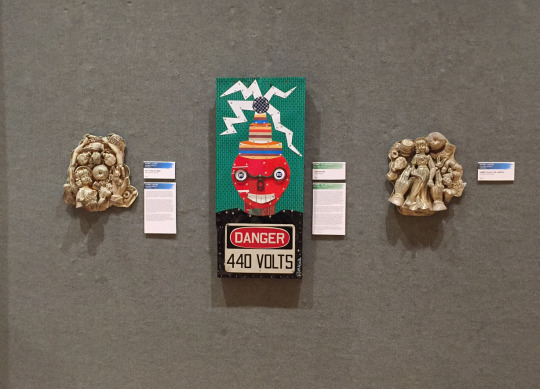
Left & Right - Woodfired Porcelain Sculptures by Concord Graduate Mandy Lester. Center: Mixed-Media work “Danger Man” by Robert Villamagna (Assistant Professor of Art Director, Nutting Gallery, West Liberty University).

Vandalia Vantage Point by Marry Grassell
When Mary Grassell was growing up in a small Western Pennsylvania town, she, like the rest of her family, spent her free time drawing and painting. “I grew up thinking that drawing was what people did for fun, [so] I guess I had a lot of practice early,” Mary tells us. It didn’t take long for that early practice to pay off. When she was just ten years old, Mary was selected to attend the free Tam O’Shanter classes at the Carnegie Institute in Pittsburgh. She was one of two children selected from her school district, and the opportunity proved to be something that would change her life. “I was a little girl from a blue collar family that was given a great gift,” she explains. “What a world of opportunity it opened!”
Every Saturday morning from fifth grade through high school, Mary took a bus and a trolley to Pittsburgh’s Carnegie Institute and, later, to Carnegie Mellon University. She attended classes in drawing, design, and painting and soon knew that she wanted to attend college at Carnegie Mellon as well. “In my family, this was like asking for a million dollars,” she tells us. “Girls did not need to attend college according to my parents. I worked hard in high school so that I could apply for scholarships, which I received, and continued to receive all through my undergraduate years. I appreciate the persons who made these scholarships available.”
With the doors of collegiate study now open to her, Mary decided to pursue the study of graphic design because of her love for type, layout, and illustration, but continued to take painting and printmaking courses as well. After graduation, she became a working graphic designer and was successful in finding jobs while she raised her children and traveled the country for her husband’s career. At one point, Mary was asked to fill an open Typography instructor position at a local community college. Teaching wasn’t something she had planned to explore in her graphic design career, but Mary decided to take the job anyway. To her surprise, she learned that she enjoyed the fusion of practicing and instructing. She liked it so well, in fact, that she decided to pursue teaching at a collegiate level long term. She continued teaching art and design courses at the community college for many years and returned to school herself, earning an MFA from Syracuse University. Eventually, Mary’s husband was transferred to Charleston, West Virginia, but she was able to obtain an adjunct teaching position in Typography at Marshall University. She soon became a full time professor and has remained a faculty member there since 1992. Although Mary continues to teach graphic design, she began to seriously focus her energies on relief printmaking as well and now frequently exhibits her autonomous works. “The two things I had avoided when I graduated from Carnegie Mellon (teaching and exhibiting) are the very things that keep me going now,” she tells us.
When I look back at my life, I think that without the foresight of an art teacher who chose me to attend those classes at Carnegie Institute, and how my knowledge of Typography has gotten me into teaching in two institutions, I was destined to be doing this. I love the classroom and the way teaching keeps the principles of drawing and design at the forefront of my brain. I can’t imagine my life any other way. I always remember that someone informed me that I had talent so many years ago, so I try to give the same encouragement to my students. Maybe they just need someone to tell them: “Hey, you are good at this, and should do this for a living!
While Mary continues to encourage her students and helps to cultivate their talents, she’s spent significant time and energy for her own body of work over the years. She specializes in printmaking, a discipline that has captivated her since her days at Carnegie Mellon, where she was exposed to diverse historical examples of the medium. She takes particular inspiration from two distinct traditions – one being pre-Incunabula printed books and the other Japanese woodblock prints. “While these appear to be two entirely different artforms, they share a few common traits,” she tells us. “Both depicted life as it was at the moment of the creation of the print – the landscape, the dress, the furnishings of the time. Both told stories, making the works important, thereby validating their creation. Both reflected the social climate of the times portrayed. I realized that this is what I wanted to do. I, too, wanted to depict, in my own art forms, what life is like in my time. I wanted the narrative and meaningfulness to be present in my work.”
Mary continues to keep the heart of those historical traditions in mind when she develops her own prints, but an additional layer of inspiration comes from the spontaneity of the process itself. “Every print I make is an experiment,” she explains, “screen printing, mono printing, and etching – and sometimes I use them all together with relief printing. It is all an experiment. There is the creative part, which the artist pursues in good faith, picturing the end product, and then there is the print part, where whatever the artist envisioned is altered by the process itself.” In appreciation of the balance between intentionality and surprise, Mary is particularly drawn to making prints with woodblocks, where the incorporation of an organic component like wood encourages an even deeper relationship between artist and their tools.
I have come to know different woods and their resistances. Some are impossible to cut and some are compliant. The uncooperative woods are a challenge, and I almost like them best…When I print what I have cut, it is always a surprise. I consider the cutting of the block drawing with a knife, and I am so focused at this point, trying to figure out how to approach the wood to get what I want. The wood, at the same time, is saying “do not cut that direction; I don’t like that.” Or “No matter what you do, I am going to leave some residue here that is sure to print. Or, “I am going to cause you to slip here, and cut what you don’t want to cut.” It may sound crazy, but this is the dialogue that the wood has with me. But, the more difficult the wood, the more amazing it prints. It leaves some of its grain in the print as a gift and it produces a quality of line that cannot be drawn or painted, only cut. In the end, both of us working together produces some fine results.
An especially fine result of Mary’s effective balance between her artistic intentions and the natural properties of her tools exists in her print Vandalia Vantage Point, which recently won an Award of Merit from the 2016 West Virginia Juried Exhibition. The enormous print was cut over the course of five months because of the unruly threadlike grain of the wood. According to Mary, she almost had to “trick” the wood so that it wouldn’t unravel like it wanted to. But, in the end, she produced a profoundly detailed 20x30” print. In addition to investing a significant amount of heart and soul in the complex technical process, the subject of the print is representative of an emotional bond, too. The piece depicts a group of string band players circled at the trunk of a massive magnolia tree. Hidden among the branches are two young children, who are watching and listening as the musicians play their songs. “The music I have portrayed in Vandalia Vantage Point is the music of the mountains,” Mary tells us. “I have no special gift for performing, so in my work, I am portraying music with the gifts I have been given. My family, my husband and children, are all very musical, so there is always music in my life.”
Each May, Mary’s family ventures to the Capitol grounds to celebrate the Vandalia Gathering, a special festival that brings together the most acclaimed Appalachian musicians and lovers of string band music. “Groups of musicians gather under huge Magnolia trees on the grounds and play and play,” Mary tells us. “My family pulls up camp chairs and listens for hours…This situation is so unusual, musicians playing outdoors, under the trees, tune after tune with no written music to perform to… It is a musical experience like no other.” Mary routinely sketches and photographs scenes from the Gathering so that she can later incorporate their music into her visual art. On one such occasion was when the inspiration for Vandalia Vantage Point struck:
While watching the musicians, two little girls climbed one of the Magnolia trees to get a better view. No parents scolded them, so I quickly clicked a few photos and sketched some fast sketches because I marveled at their nerve. The musicians in the print are a composite of the musicians we have seen repeatedly over the years. I put them together in one ensemble. In this print, I wanted to show the story of this fine day, the broad leaves of the Magnolia and the bravery of the girls who had the best seat in the house. It is a tribute to the natural talent of the musicians and the historical quality of their music, all in the natural setting of the Vandalia Gathering.
Mary pays homage to her love of Appalachia and its rich history beautifully in Vandalia, and her love of the region contributes a special essence to her larger body of prints as well. “I find that I am compelled to demonstrate the good life of Appalachia,” Mary explains. “I grew up in the northern part of Appalachia in a pocket of immigrant coal miners…I realize that my childhood was unique. This uniqueness which I have hidden all of these years is finally starting to show itself, by itself. This is how I remember it. It was a good life for me…I finally feel richer for this life.” Mary’s deep appreciation for her adopted West Virginia home offers endless inspiration, too. “Every time I drive through West Virginia, I am blown away by the landscape. In all seasons, the landscape shows beauty and steadfastness. This steadfastness of landscape, wildlife, and plants plays a part in my artwork. But the people play an important part as well. They are steadfast and hearty within that landscape. I would like the viewer to get this sense of place, confidence, and beauty as I tell the tales of Appalachian experiences. I would like to share the good life I have experienced.”
Please join us in congratulating Mary on earning an award for her piece Vandalia Vantage Point, which symbolizes her love of printmaking, people, and the region she calls home. It will remain on display in the David L. Dickirson Fine arts Gallery until February 21, and will also be displayed at the Cultural Center in Charleston, West Virginia.

Charleston resident Newman Jackson navigated a long and winding path before realizing his goal of becoming a working visual artist. His career in the chemical industry had come to an unexpected halt after the company he worked for moved their operations overseas. He returned to school, earning an Associates Degree in Computer Technology, but soon discovered that job placement in the field wasn’t as accessible as he initially thought. “Years of past job experience, schooling, mailing out resumes, and sitting in interviews was not opening opportunities for me,” he explains. However, with encouragement from his life partner Brenda, Newman decided it was time to embark on a search for new possibilities. “I was told to pursue the thing that I do best,” he tells us, “and that was art.”
Soon after shifting focus, Newman was offered an exciting opportunity by local artist who, knowing nothing of Newman’s background or experience, offered him a solo exhibition at the University of Charleston’s Frankenberger Gallery. “I did not have many pieces,” he tells us, “but what I did have was a few large oil paintings and some photographs that had never been seen beyond the nooks and corners of my house…The sight of my work on public walls was exhilarating. It was a feeling that I rarely felt.” It turned out that aside from providing a splendid introduction to the Charleston arts community, Newman’s first solo exhibit would open more doors than he could have anticipated. After reading about the show, an old friend reached out to catch up and, upon learning Newman was in pursuit of a studio space, offered him one on the spot. “Things just seemed to be falling into place,” Newman tells us, “as though opportunity had been waiting for me to take ownership of my fate.” Over the following years, Newman aggressively promoted himself and his work, proactively seeking opportunities to engage with the creative community to learn how to succeed as a working artist. He joined the Allied Artists of West Virginia and was eventually voted in as President. During his three year tenure, he sought audiences with other artists and organizations, which reinforced his appreciation and understanding of success through shared experience.
Meanwhile, Newman made strides to fold that positive communal energy into his working environment as well. With the help and support of his old friend, the two expanded his studio, offering a total of 22 local artists a place to work and grow their reputation together. They adopted the name Chimera Studio and through word of mouth, became a growing attraction. But, after three years of progress, unforeseen circumstances required the studio to dismantle. “We were forced to move out [and] many did not have a place to be,” Newman explains. “Some, who were encouraged by their new working recognition sought out and found new spaces to work…landlords, who had heard of our plight, were encouraging in offering up new spaces.” Unfortunately, despite the accommodating efforts, many lacked the funds to start over in a new place. Eventually, Newman was put in touch with a building manager who had an opening within his means. He was finally able to work again after losing a year and a half of production time.
Although he had to leave the close-knit environment of the Chimera Studio, Newman has carried the experience with him and applies the lessons he learned there to his painting. “I confess that I was a little closed minded about certain types of art,” he explains, “but my exposure to all of the different styles of artisans at the first building opened my eyes to many possibilities. I began to read about artists who inspired these friends to find out what inspired them to paint the style they had chosen.” As for Newman’s style, his personal idols are Norman Rockwell and Salvador Dali, a combination that at first seems strange, but for his creative process, both Rockwell and Dali’s work possess qualities that offer endless inspiration:
For me, Norman Rockwell is the best storyteller to have ever lived. To look at a Rockwell congers up emotions [and] in one frame, an entire story is told. This is the job of an artist, [to] inspire emotions either through word, song, or painting. As for Dali, I have a tendency to speak in metaphors…Through Dali, I have learned that phrasing does not have to be literal to be understood. His wording, through his paintings, just adds more majesty to the moment than any representation of the same event that I have ever seen.
Newman’s appreciation for representational storytelling, coupled with his love of metaphor, comes through in his paintings, which often blend figurative elements and abstraction. The combination offers just enough visual information to suggest a sense of a story, while the expressive abstract styles add a compelling emotional layer. Going back to Newman’s appreciation of Rockwell and Dali, it makes one consider the complexities of depicting human feeling. So often, true emotions are disguised and clouded by the conditions that create them. Using his method, Newman encourages those who view his work to decode a deeper message. A stellar example of this principle exists in Newman’s piece Sorrow Revealed, which recently earned an Award of Merit from the 2016 West Virginia Juried Exhibition.
According to Newman, his award winning painting was inspired by a famous scene from the 1967 film In Cold Blood in which Robert Blake’s character shares a painful story from his youth. As he spoke, light passed through a rainy window pane, making it appear as though tears were streaming down his face. “I saw this as a sorrow revealed through what I considered to be a metaphor for his dysfunctional childhood,” Newman explains. “There were no tears shed, just the illusion. The pain of experiences is often disguised by false smiles, pharmaceuticals, alcohol, or a walk in the rain.” In Sorrow Revealed, heavy rain is suggested rather than depicted through vertical drags of paint. A woman crouches with her umbrella beneath the torrent, but her reaction is clouded by the flow. The painting does an excellent job of connoting the complexities of sadness or regret through the depiction of both posture and atmosphere. With the combination, we are offered an opportunity to experience emotion in Newman’s metaphorical sense, but are afforded just enough freedom to extract personal interpretations, too. The effect is moving and proves to be a lovely balance between figurative storytelling and abstract expression.
Sorrow Revealed will remain on display in the David L. Dickirson Fine Arts Gallery until February 21, 2016 along with his other piece Sunday Distractions.

Sacred and Profane by Chris Dutch
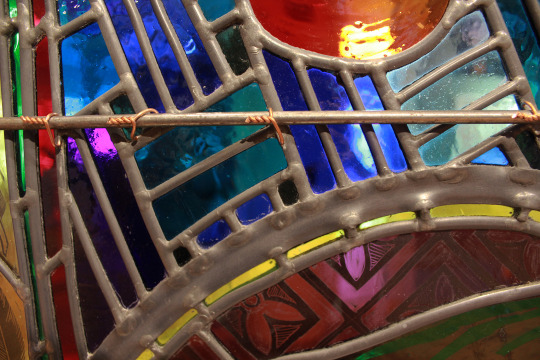
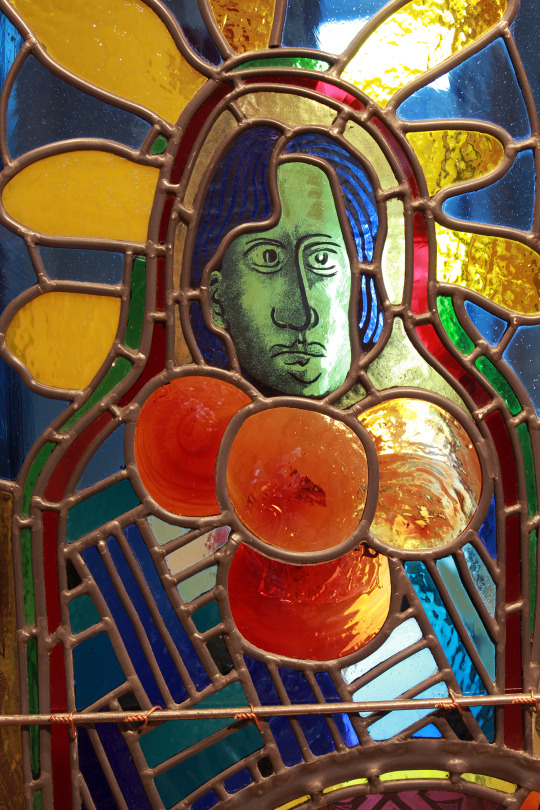


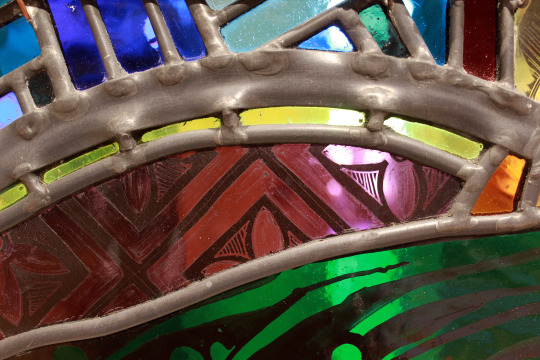
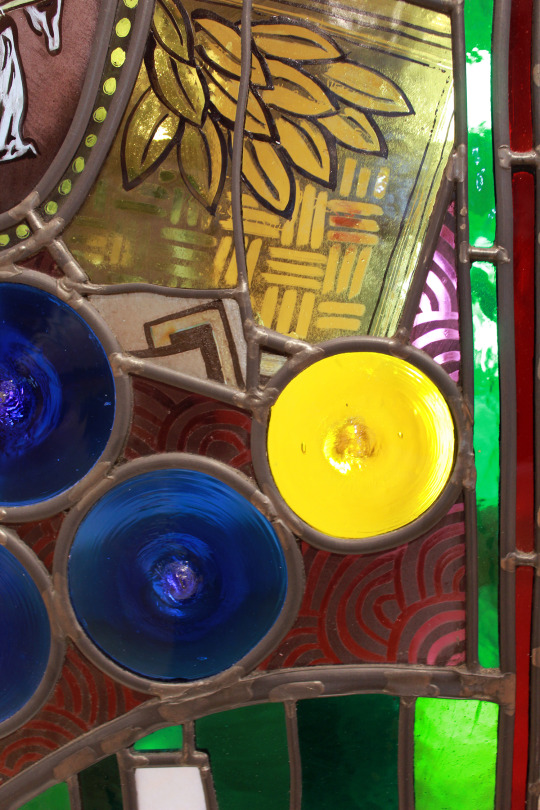
Sacred and Profane(Details) by Chris Dutch
For as long as he can remember, artist and craftsman Chris Dutch has been a “maker.” “Growing up,” he explains, “I drew and cut up paper and built things with wood and dug holes in the yard. Looking back, I think it was all part of the same thing to me. I wanted to study architecture, but for various reasons ended up in Civil Engineering, which, at its most basic [level] is the study of how to make things stand up and hold together when gravity and time want to make them fall down.” Chris enrolled at the Rensselaer Polytechnic Institute of Troy, NY, but discovered after graduating that entry level positions in his field were not always positioned on the most creative end of the spectrum. He worked as a construction inspector for a few years, but when his wife accepted in a job in West Virginia, he was able to turn his attention to making art again. “I learned how to be a professional artist from the people that I got involved with in Charleston when I relocated here,” Chris explains. “There was and still is a very supportive community of artists [and] I found the medium I love here…”
The medium Chris is referring to is stained glass, a discipline that for him offers several appealing qualities, many of which have connections to the region. Because of West Virginia’s historically strong association with glass manufacturing, materials are abundant. And, according to Chris, that enduring industrial relationship cultivates local interest and support for glass-based works. “I also think that because of the history and promotion of traditional craft in Appalachia, art media and craft media are more integrated,” he explains. “It is acceptable to have fine art aspirations when working with a medium that was considered “craft.” This widely appreciated fluidity between “art” and “craft” in West Virginia offers Chris the opportunity to fuse the visual design aspects of decorative arts with the functionality of historical glass crafts, a combination that works beautifully for both commercial pieces and his independent creations.
Chris’s approach to making stained glass is a blend of problem solving and organic progression, a process that informs his commission projects as well as his autonomous work. “It is hard to do stained glass without getting involved with commissioned work,” he tells us. “It is traditional to the medium and provides somewhere for larger work to be seen. But, often you are asked to create something because you work in a particular media, not because the client likes or has ever seen your work. I’ve enjoyed, been challenged, and been very frustrated in totally switching styles for different projects… When you are working from your own ideas, one piece grows out of the one before, and the one before that. Or, if it isn’t working, you are free to explore other avenues and other subjects.”
In Chris’ autonomous compositions, he embraces the use of bold, leaded contour lines and points to the colorful properties of his glass materials as a secondary interest. For him, the appeal of the medium is the act of taking a drawing (which often starts in black and white) and translating it into graphic lead lines. Color choices are then added “coloring book style” to finish out the idea. His choice of subject material stems from his enjoyment of the creative process and he rarely depicts things in his pieces that promote a specific message. “The most important thing to me is the visual image and what kind of emotion it provokes,” he tells us. “…the subject is often just a frame to hang a style on; to see what happens if you take a bit from this period and tweak it with a bit of that style, or to add something of your own to it.”
This principle is illustrated beautifully in Chris’ piece Sacred and Profane, which recently won an Award of Merit from the 2015 West Virginia Juried Exhibition, a biennial show sponsored by the West Virginia Division of Culture & History. In Sacred, Chris built upon the idea of a traditional church window, incorporating numerous symbols throughout the design that reference historical imagery as well as modern forms. Presented in the top half of the window is a face that, according to Chris, could be a saint or angel wearing what he envisions to be a somewhat confused expression coupled with some (angelic) feather forms. The figure of Death, whose image was inspired by a medieval window design, occupies the bottom half of the panel. Surrounded by snakes, Chris imagines this scene to be significant (or generally “creepy”) for many people who place meaning in the mainstream interpretation of these motifs. The two opposing scenes are unified by geometric patterns that were inspired by both medieval and modern stained glass works, a combination that points to Chris’ appreciation of the discipline’s history and aesthetic development. That same appreciation comes through in his selection of glass material as well. The bold yellow and blue segments were formed using glass from Blenko, a company that has been based in West Virginia since 1921 and continues to produce their signature line of colorful glass works. Also incorporated in Sacred is a broken shard Chris kept from a restoration job, another nod to the medium’s legacy.
Sacred and Profane is currently on view in Tamarack’s David L. Dickirson Fine Arts Gallery, which is hosting the 2015 West Virginia Juried Exhibition until February 21, 2016. Gallery visitors have enjoyed interpreting the window’s images in an attempt to discern whether a particular narrative is embedded in the design. While varied theories and have been culled, Chris is tight lipped about making specific suggestions on the topic. He wants viewers to draw their own conclusions:
I love to hear the interpretations that viewers have for my pieces. They are often much more interesting than whatever idea I had that inspired the work. It is interesting to hear how a work of art came about, but eventually it has to stand on its own without the knowledge of what the artist was thinking. An emotional connection is between the object and the viewer.
Please join us in congratulating Chris on earning an award for his enigmatic piece Sacred and Profane. And, don’t forget, the window will be on view in Tamarack’s David L. Dickirson Fine Arts Gallery until February 21.

Opening Reception and Awards Ceremony:
Sunday, November 8, 4:00pm
Exhibition Run:
November 8, 2015 - February 21, 2016
The West Virginia Division of Culture & History and TAMARACK: The Best of West Virginia invite you to the 2015 West Virginia Juried Exhibition Awards Ceremony & Opening Reception on Sunday, Nov. 8 at 4:00pm. This event is free and open to the public.
The division will present up to $33,000 in awards for the exhibition, which are made available through the West Virginia Commission on the Arts and the WVDCH through funds appropriated by the West Virginia Legislatureand the National Endowment for the Arts.
Since 1979, the Division of Culture & History’s biennial event celebrates the exceptional talents and creativity of Mountain State artists. This year’s exhibition will open at Tamarack with an awards ceremony and reception at 4 p.m., Sunday, Nov. 8, 2015. The show will remain on display through February 21, 2016.
The exhibit showcases the work of state artists and craftspeople and provides the public with a comprehensive view of art and craft activities in the state.

Have you heard about West Virginia Craft Week ? From October 2-11, 2015, catch a rare glimpse into the creative processes of artists and artisans who live and work in West Virginia.
Artists throughout state will open their studio spaces just for you during this special celebration, so be sure to “like” the West Virginia Craft Week Facebook page (linked above) to find out what exciting events are happening in your area.
Join us in supporting the work of those who preserve and transform the tradition of American craft.
For additional information, visit wvcraftweek.com

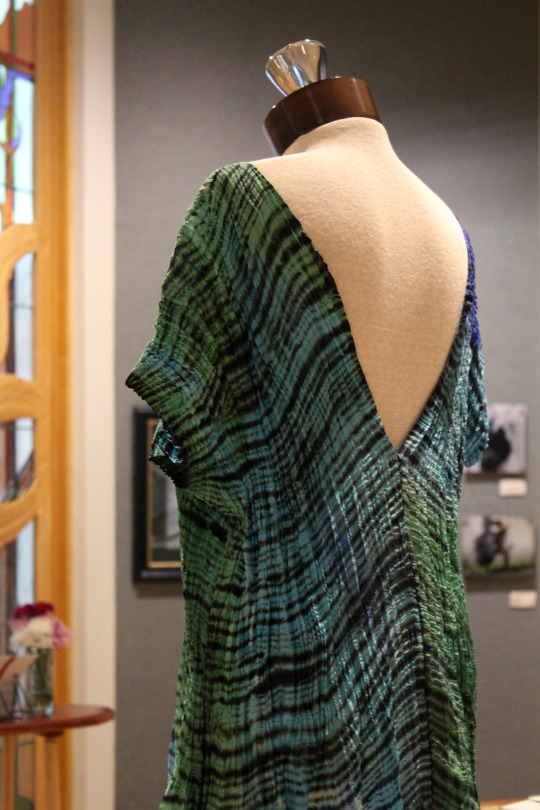
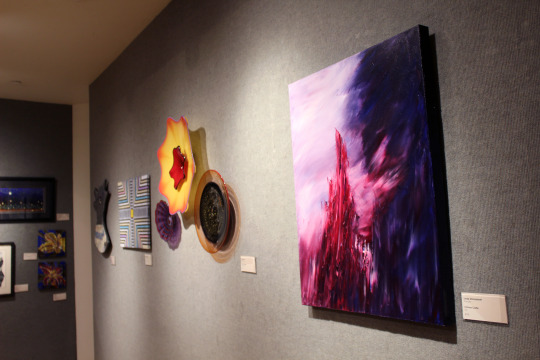

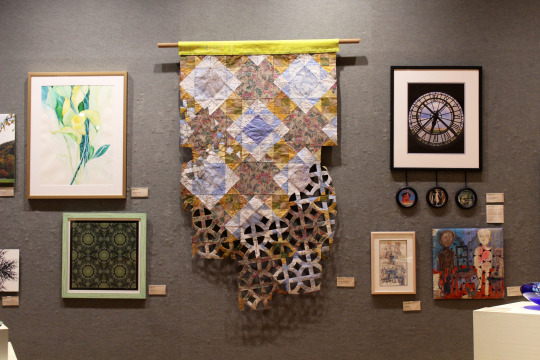
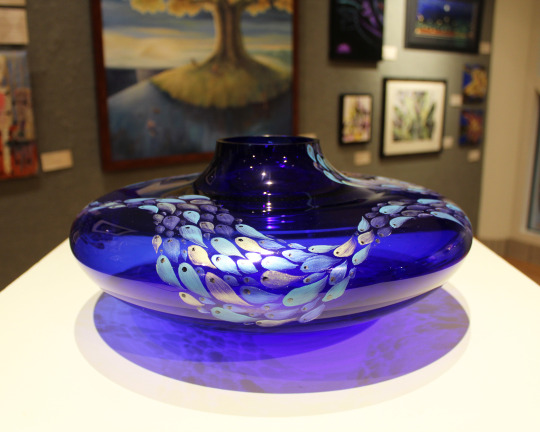
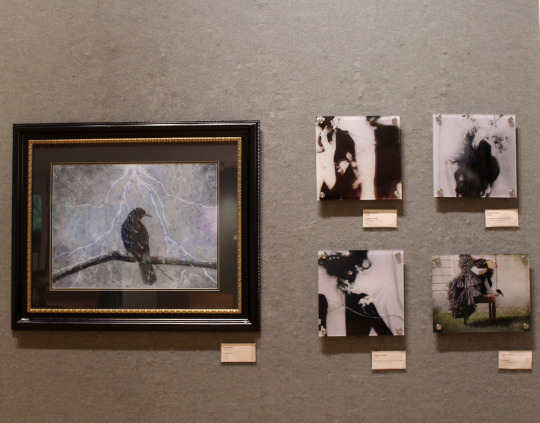
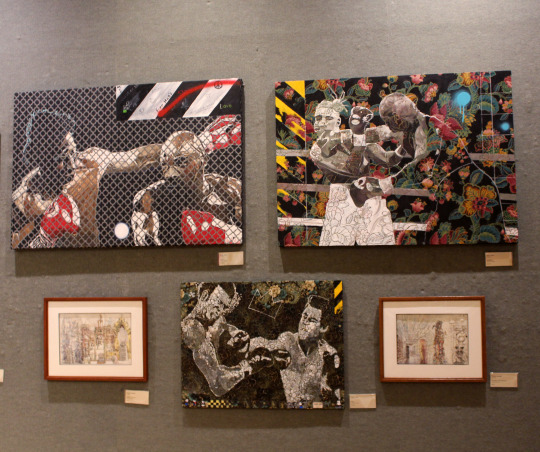



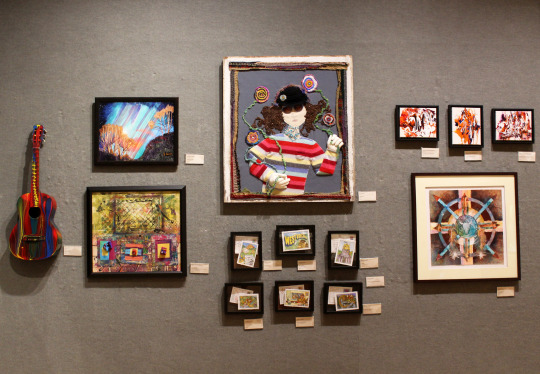

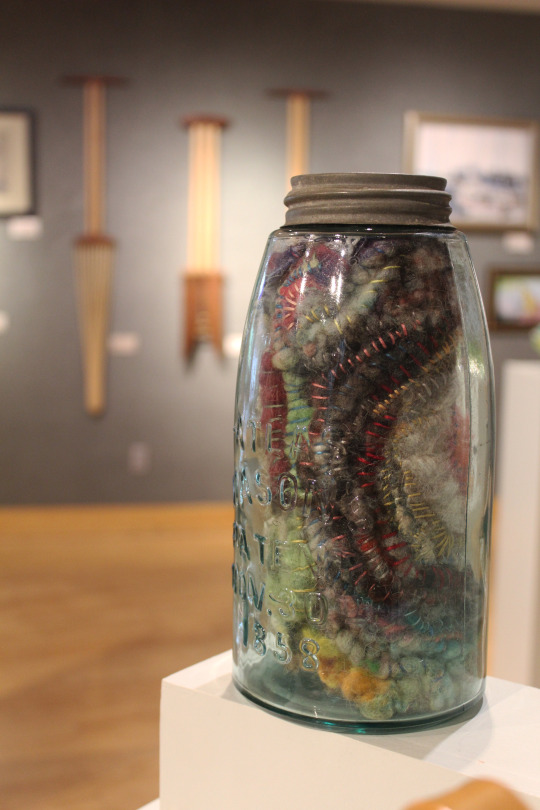
In this special exhibit, juried Tamarack artists and artisans push the boundaries of traditional forms, techniques, and disciplines into new and exciting territories. From mixed-media collages and painted glass to technological designs and fiber arts, expect the unexpected from this eclectic display. Open now.
1. Left: Fiber works by Ann Grimes (Wayne Co.) Right: “Bomaki Butterfly Dress” by Nellie Rose Davis (Randolph Co.)
2. “Bomaki Butterfly Dress” by Nellie Rose Davis (Randolph Co.)
3. “Crimson Castle” oil painting by Linda Stonestreet (Putnam Co.)
4. Assorted ceramic works by Norma Acord (Mercer Co.)
5. Center: A Distillation of Antiquated Mores (or the times Our Changing)” mixed media work by Robby Moore (Raleigh Co.)
Top Left: “Squash Blossom Tango” watercolor by Rita Montrosse (Mercer Co.)
Bottom Left: “Damsel’s Quilt II” digital illustration by Linda Gribko (Monongalia Co.)
Top Right: “Inside Out Clock with Three Telescopic Pictures” by Deborah Herndon (Kanawha County.
Bottom Right: “Looking Back” by Vernon F. Howell and “He Brings His Pattern Home” by Robby Moore (Raleigh Co.)
6. “Fish Wave” painted glass by Martha Reynolds (Doddridge Co.)
7. Left: “Turbulence” acrylic painting by Kathy Welch (Wayne Co.)
Right: Photographic illustrations mounted on acrylic by Angie Lambert (Mason Co.)
8. Center: Mixed media boxing works by Mark Cline (Monroe Co.)
Lower Left and Right: Mixed Media collages by Vernon F. Howell (Cabell Co.)
9. “Fish of Many Colors” painted glass by Martha Reynolds (Doddridge Co.)
10. Top Left: “Beacon” mixed media by Amy Stout and two Mixed Media works by Akemi Matsumoto (Wood Co.)
Center: Three wood sculptures from the “Implement Series” by Joshua Miller (Hardy Co.)
Top Right: “Folded Seascape” acrylic painting by Vernon F. Howell (Cabell Co.)
Below: “Fall in a Valley” by Akemi Matsumoto (Wood Co.) and oil painting “Tattered but Not Torn” by Connie Mae Moeller (Nicholas Co.)
11. “Kung Pao Dragon” ceramic piece by Michael Garnes (Kanawha Co.)
12. Left: “Color is Rhythm” mixed media by Jacob Bucy, “Festival of Lights” oil painting by Kathleen Hollett (Cabell Co.), “Open Window” mixed media by Cheryl Ryan Harshman (Ohio Co.)
Center: “Childhood” mixed media by Ann Grimes (Wayne Co.)
Below: Assorted drawings by Brenda Pinnell (Kanawha Co.)
Right: Assorted abstract paintings by Nancy-Louise (Kanawha Co.)
Below: “Spirit of the Hunt” mixed media by Sandra King (Clay Co.)
13. “Rusted Penny” wood turned bowl by Tom Schottle (Putnam Co.)
14. “I Canned It” mixed media by Ann Grimes (Wayne Co.)
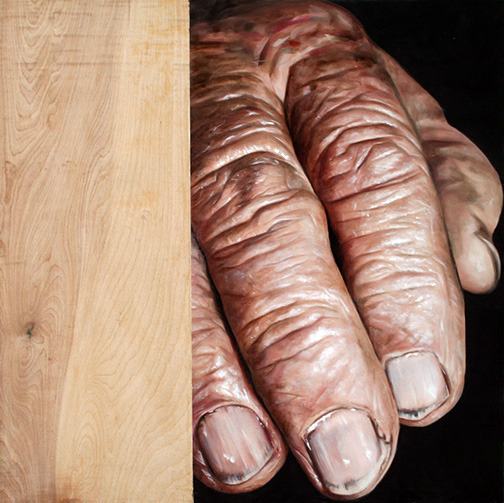

It was six years ago when West Virginia artist and designer Tiera Floyd discovered she had a hidden gift for painting. After earning a Bachelor’s in Graphic Design from West Virginia Wesleyan, she is now committed to exploring and cultivating her talent as a painter. She decided to enroll in West Virginia University’s Master’s Program with a concentration in Fine Art, where she will continue to study and paint for the next three years.
Since the time of her initial discovery, Tiera has employed her skills and created a beautiful and personal body of work, selections from which have already made appearances at esteemed venues and competitions in West Virginia and beyond. Her paintings have earned three awards from the Division of Culture and History’s “West Virginia Juried Exhibition,” including the prestigious D. Gene Jordan Memorial Award in 2013. She will also be participating in ArtPrize7 in Grand Rapids, Michigan this September and her work will be featured in WVU’s upcoming MFA exhibition at the Southeastern College Art Conference in Pittsburgh this fall.
Working in series, Tiera’s paintings celebrate the essence of human experience by honoring her subjects’ most expressive and emotional features. Her tightly cropped portraits of watchful eyes, smiling mouths, and calloused hands invite viewers to consider the personal histories of the people Tiera depicts in a way that’s both intellectual and mysterious. Her intentionality in composition also carries over to her technical process, through which she often makes deliberate connections between her subjects and her materials. Using tools like sandpaper, she modifies the surfaces of her paintings to create conversations between her layers of paint and what lies beneath, emphasizing the physicality of her work.
This unique concept is particularly evident in her “Engrained” series, which is a tribute to her family and heritage. “I come from a creative family,” she explains in her artist statement. “The house I grew up in was built entirely by my parents and grandfather, Pap. Pap is a carpenter, wood-worker, and creative genius. His brothers and sisters, my great aunts and uncles, also quilt, craft, construct, and create. This list of relative talent continues on and on, but the point is – I’m not alone, creativity is in my heritage.” In the series, which is made up of three paintings, Tiera depicted an image of her grandfather’s, father’s, and her own hand on wooden board, but on each piece, left a segment of the panel completely exposed. “By allowing the wood grain to break through the painting – interweaving and flowing with the painted surface – previously ignored aspects of the painting are discovered,” she explains. “…The wood grain further expresses character through the lines created by an aged tree, similar to the wrinkles and fine lines that define that subject’s personality.”
Aside from the visual interest revealing this wood grain presents Tiera also wants to express the symbolism embodied in this creative choice. “The wood grain juxtaposes the oil paintings not only to play on the lines of the painted hands, but for natural significance. Painting the hands of myself, my father, and Pap for an “Engrained” study express heritage. I focus on hands in this series because they serve as the tools we use to convey our creativity. As “Engrained” pay(s) homage to heritage, they also inspire future endeavors in my painting process on wood, as well as other artistic outlets.”
This summer, one of the works from this series, “Engrained Study: Pap” was selected for inclusion in Tamarack’s annual “The Best of West Virginia Open Juried Exhibition” by jurors Tim Glotzbach (Berea, KY) and Jennifer D. Anderson (Roanoke, VA). The piece’s impressive technical merits as well as its touching story made quite the impression on Tamarack visitors, whose collective votes earned Tiera and her painting this year’s “People’s Choice Award.” Please join us in congratulating Tiera on this achievement as well as her numerous others. To learn more about her, and to stay informed on her upcoming events, please visit her website , follow her on Instagram, and “like” her Facebook page.
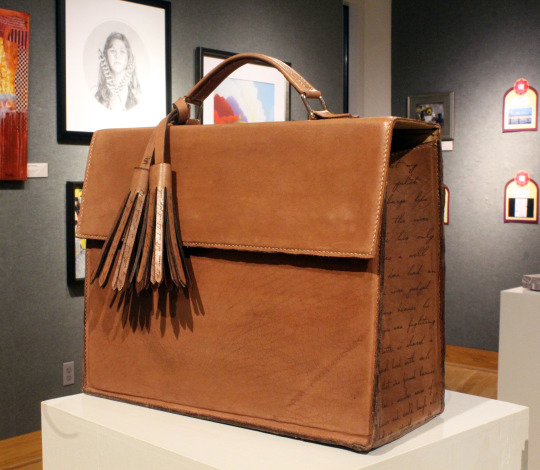





“Everyone has a story. What’s yours?”
This is the slogan for “Silently Speaking Gratitude,” a line of handmade accessories designed and crafted by South Charleston native Morgan Rhea Richards. The collection, which features hand-stitched, hand-patinated works in leather, represents more than excellent examples of fine craftsmanship. It serves as a vehicle through which Morgan can share appreciation for those who have influenced her most, and an opportunity for the wearer to tell a story of their own.
While studying at the Savannah College of Art and Design, Morgan had the idea to release a collection that honored the trials and triumphs of those who impacted her life along the way. Using their personal journeys as creative fodder, she made her leatherworks a platform for sharing these formative stories, inscribing their surfaces with passages in script. An excellent example can be found in Morgan’s “Ronald Briefcase” design, which features an inscription on the sides and tassel adornments. The language reflects upon memories of her uncle Ronald Dean and his experience with the struggles of addiction. For Morgan, artfully sharing her uncle’s story, as well as the others that populate her “Silently Speaking Gratitude” line, is a way of saying “thank you” in a way that will endure for generations.
The superb quality of Morgan’s pieces, combined with the sincerity of her personal mission, has garnered an overwhelmingly positive response from some very influential members of the fashion community. While a student in Savannah, her “Ronald Briefcase” was named the “Best Student Made Handbag” in the Independent Handbag Designer Awards and was given a feature in the September issue of InStyleMagazine. She was also awarded an apprenticeship at Coach, enabling her to live and work in the heart of the New York fashion scene for three months, putting her in touch with famous designer icons like Alexander Wang and Zac Posen.
Now, Morgan has relocated back to her home state and is looking forward to growing her business in Southern West Virginia. She continues to feature works that celebrate the life journeys of her loved ones, but has now folded in an opportunity for her clients to tell a story of their own. Each piece in her collection can be engraved with words of the customer’s choosing, ranging from personal reflections to wedding dates. In fact, singer-songwriter John Legend has taken advantage of this unique custom experience, commissioning a pair of bespoke shoes that feature lyrics from one of his songs. Folk/pop musician Brett Dennen also took interest in Morgan’s concept and acquired a messenger bag from her collection. However, one does not need to be a famous performer or fashion mogul to have a one-of-a-kind Morgan Rhea piece. A visit to her website will show that every item can be customized, and she works with each customer to ensure the piece will be perfect for each experience.
West Virginia locals can keep an eye out for Morgan’s work, which is making appearances in many events and locations. Currently, an example of her “Ronald Briefcase” is on view in Tamarack’s annual “The Best of West Virginia Open Juried Exhibition,” which will run until August 9. Morgan will also be featured in Charleston’s “Fashion’s Night Out” event on August 20, where she will preview her 2015 Fall Collection. To stay connected with Morgan and to get the scoop on upcoming events, visit her website and follow her on Twitter,Facebook, and Instagram. You can also watch a video interview with Morgan, which was produced by the Charleston Gazette-Mail.
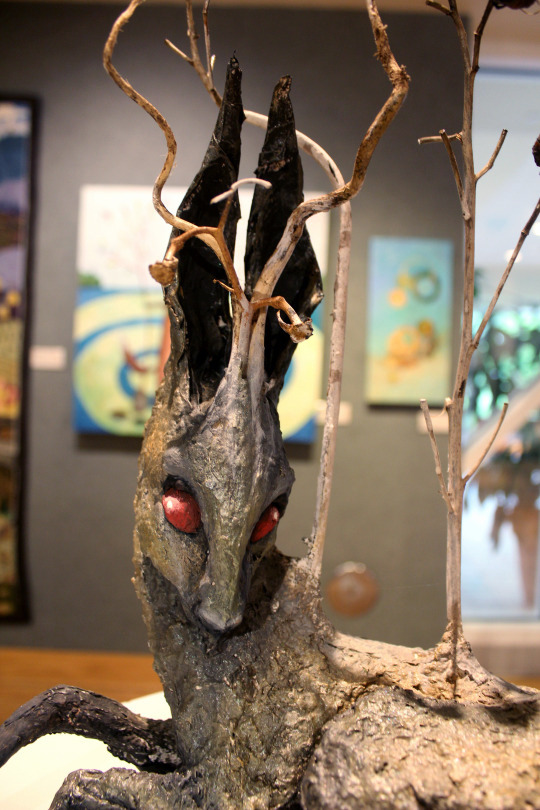
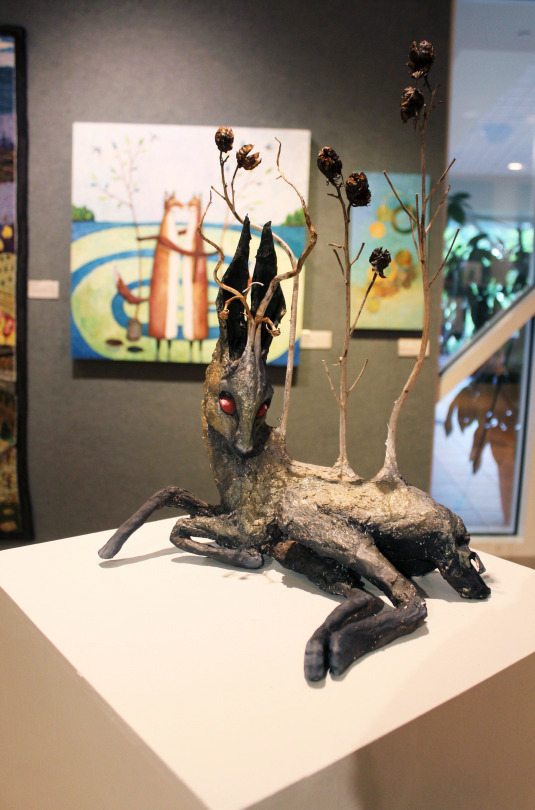

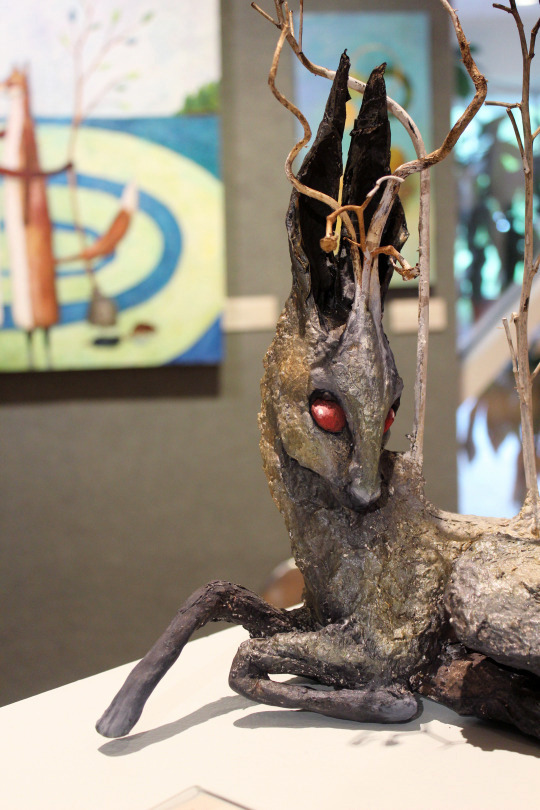
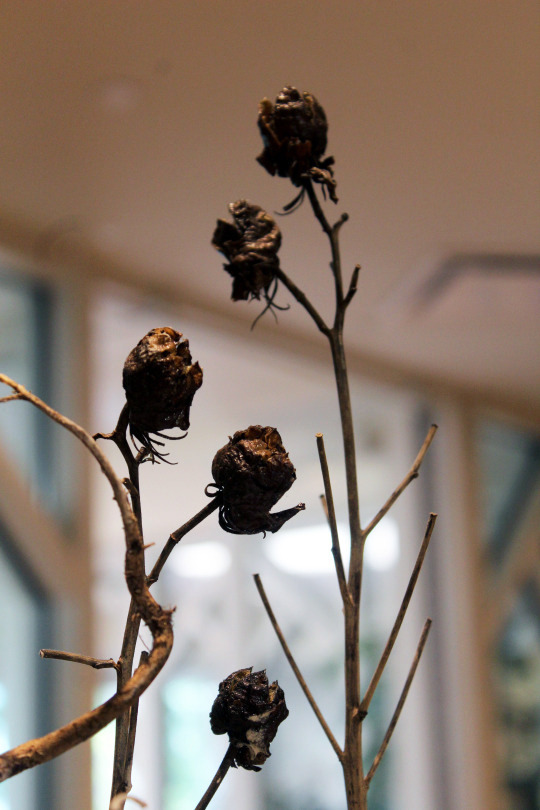

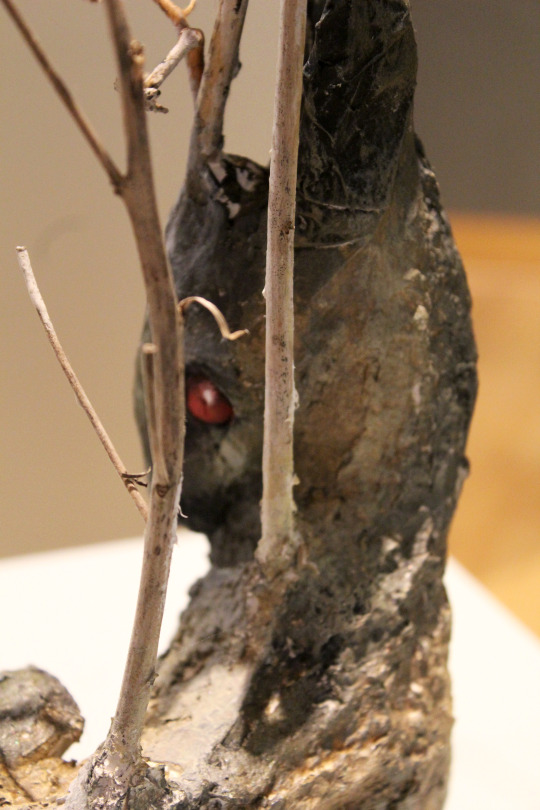

Growing up in rural West Virginia, Lavana Lemley never found herself far from the forest. She developed an enduring love for plants and animals and remains fascinated by the strange beauty that lies hidden in the woods. “I really enjoy the natural world,“ she tells us. "I find it to be dark and beautiful and really surprising. I love watching documentaries or reading about new creatures being discovered and new insights into animals and plants.” Lavana’s love of nature, coupled with a persistent interest in visual art and character design, set her on a path that would allow her to combine these passions creatively. She worked hard to develop technical skills in painting and sculpting and also obtained a B.S. degree in Computer Animation from Full Sail University.
Although Lavana became well-versed using various media, it wasn’t until she began to garden that she discovered her true artistic style. While cleaning out her vegetable patch at the end of the season, she found that what remained of her plants was uniquely beautiful and could serve as a wonderful medium for ornamenting sculptures in the round. “It was tomato plants in particular that dried naturally when just left on the ground on their own and those where what really started my need to test out other plants for sculptures,” she explains. “I experimented with methods of preserving them and once successful I began incorporating them in my art and designing creatures based around each twisted root, stalk, or branch.” Having discovered the perfect material, Lavana now uses dried plants to bring life to her art. In her current body of work, she focuses on sculpting woodland animals, mythic creatures, or something in between using a mixture of paper mache and the natural media, a combination she feels harmonizes aesthetically.
Beyond the tactile benefits, Lavana enjoys what incorporating natural material into her sculptures represents. When building roots and vines into the bodies of her creatures, she is able to visually explore nature’s cyclical patterns, particularly the enduring relationship between decay and rebirth. “The growth and decay in my sculptures is the connection animals and plants have to each other,” she tells us. “…The way an animal’s body becomes part of the earth and replenishes the soil is beautiful. The contrast to this would be how hard humans fight to preserve our bodies and fight off nature, even after death.” Lavana also uses her creative process as way to reconcile her personal relationship with the natural world. “I feel a real disconnect to nature with daily life to the point that when I go walking in the woods, I feel like a stranger – as if the woods are a totally different world coexisting with human world. I [also] try to bring this feeling of unfamiliarity to my sculptures.”
A beautiful example of Lavana’s artful examination of life, death, and preservation exists in her piece "Tranquil Hare,” which was accepted into Tamarack’s annual “The Best of West Virginia Open Juried Exhibition.” The sculpture is of a rabbit in repose, calmly watching as vines grow up from within its side. The same growth sprouts from the animal’s forehead, suggesting a set of jackalope’s antlers, carrying the foliage motif throughout the length of the body. The hare’s gentle posture and tender gaze convey not only a sense of defeat, but also acceptance. Slowly returning to where it came from, it transforms into something new. In “Tranquil Hare,” Lavana elegantly captures a poetic transition between life and death and shows us that, even during that inevitable conversion, there can exist a certain grace and dignity.
Lavana’s sculpture “Tranquil Hare” has found a happy home, but more examples from her current body of work can be found on her website, which includes examples of full figure animal sculptures, creature busts, and acrylic paintings. Her work will also be on view in Berkeley Springs, WV from September 28 - Nov 8 in the Ice House Gallery’s upcoming show “Freedom of Expression.”

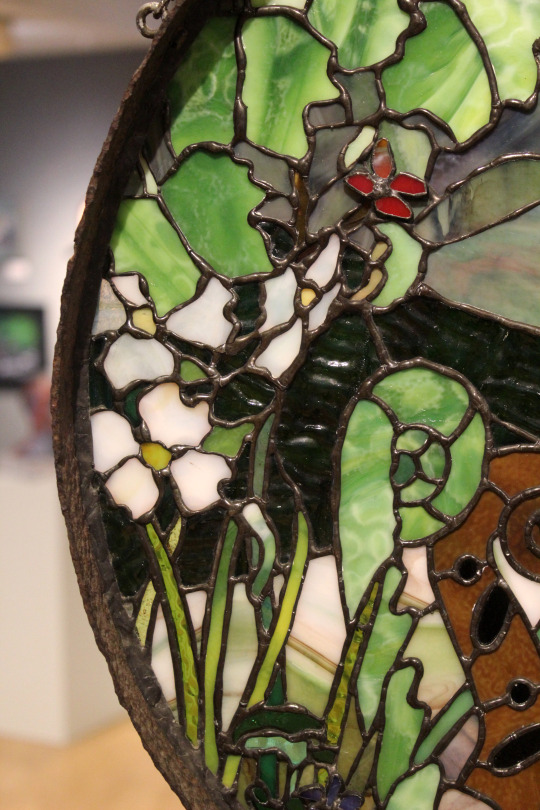

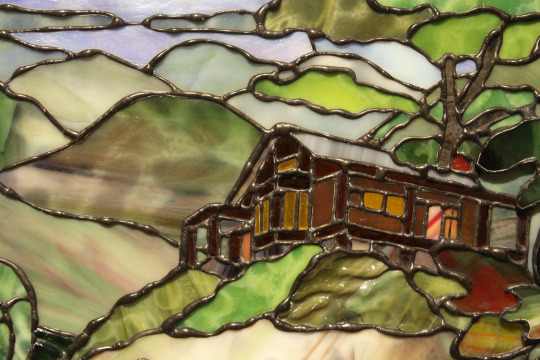


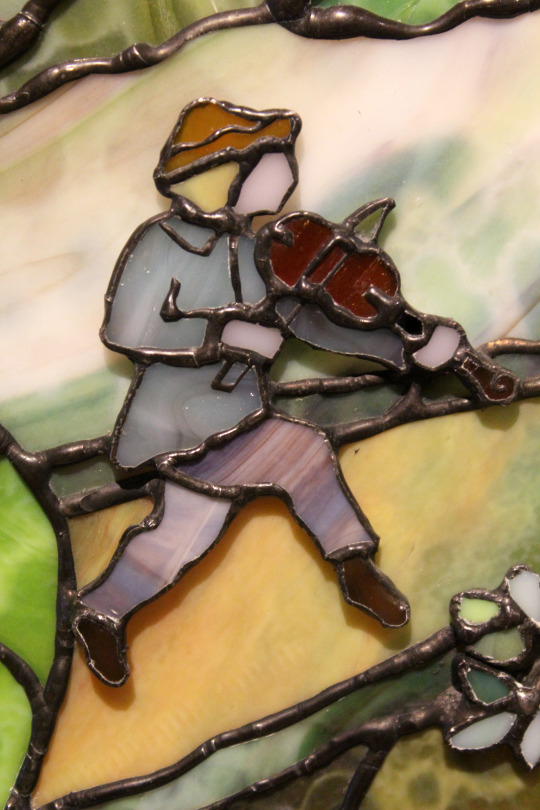




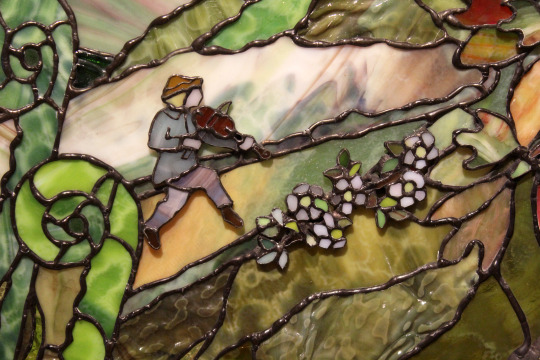
Visual artist Pamela (Sam) Adams has roots in New Hampshire but spent her youth as an Air Force brat moving from one place to another. Despite the changes in location, Sam’s passion for art and music persevered from grade school onward, leading her to a career in graphic arts and sign painting. After thirty plus years in the field, and with the decreased demand for hand painted signs, Sam decided to shift her media focus and now specializes glass works, feeling that the sky is the limit when it comes to the design capabilities glass has to offer. Sam also utilizes other disciplines, and creates works in acrylics, pastels, mixed-media, and clay.
After many years of moving about, Sam is now decidedly a permanent resident of West Virginia. “West Virginia keeps calling me back,” she explains. “…I’ve often heard people say these green hills have an energy, a pull. I believe they do…It’s very easy to burrow into our little holler and literally drink in the green all around. I am inspired every day by so many things just walking out my door and looking around.”
Sam finds that the natural beauty of the Mountain State provides endless inspiration for her work, and her affection for her adopted homeplace is especially palpable in her stained glass composition “Where the Wild Fiddles Grow.” This piece, which is currently on view in Tamarack’s David L. Dickirson Fine Arts Gallery as a part of their annual “Best of West Virginia Open Juried Exhibition,” is filled with many beloved West Virginia symbols, and pays special homage to the diverse array of flora indigenous to the region. Sam explains:
I wanted this piece to represent my love for West Virginia. All of the plants are indigenous to West Virginia: the poplar tree leaves and flower in the upper left, under them, the dogwood flowers, the little purple violets that cover our lawn, and ginseng with its red berries. There are also the mittened sassafras leaves that turn a beautiful red in the fall, multi flora roses, and green hills that go on forever. The house is the house we built here many years ago, and the fiddle growing up in among the fiddle head ferns represents the old music of West Virginia.
Aside from the beautiful representations of traditional Appalachian motifs, one may notice a whimsical little fiddle player enjoying the idyllic scene. “That little fiddler is my muse,” Sam tells us. “I learned how to play fiddle here, West Virginia old time music, and it’s that old ancient music that sings the heartbeat of this state.”
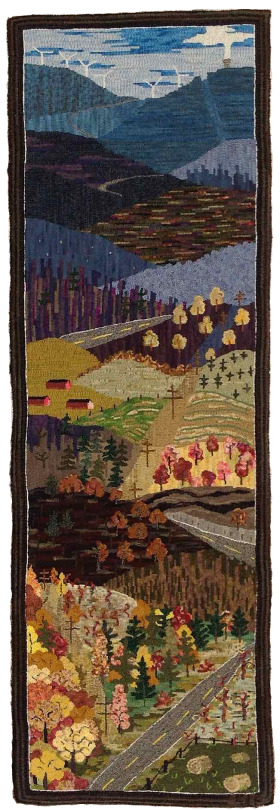
“Progress in the Mountains” Full Piece (84 x 27″)
Hand Dyed Wool Strips Hooked through Linen Foundation
Susan Feller, 2014

“Progress in the Mountains,” Detail, Susan Feller, 2014
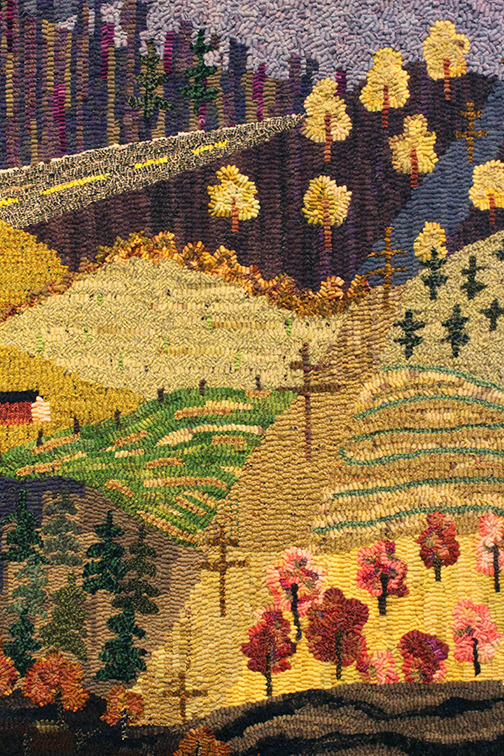
“Progress in the Mountains,” Detail, Susan Feller, 2014
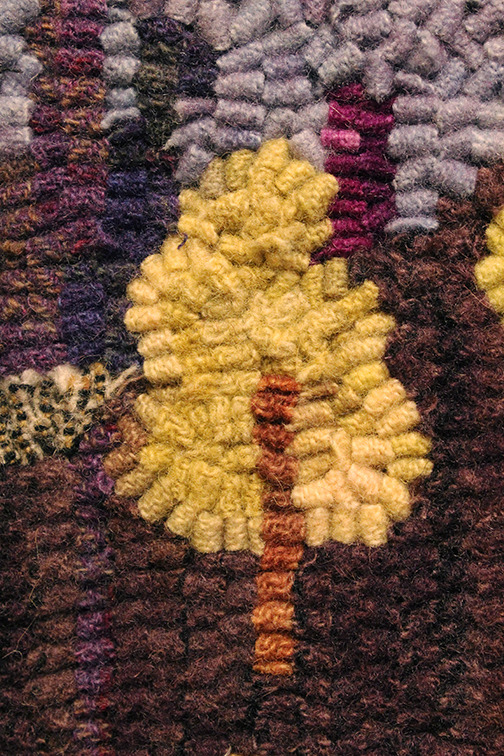
“Progress in the Mountains,” Detail, Susan Feller, 2014
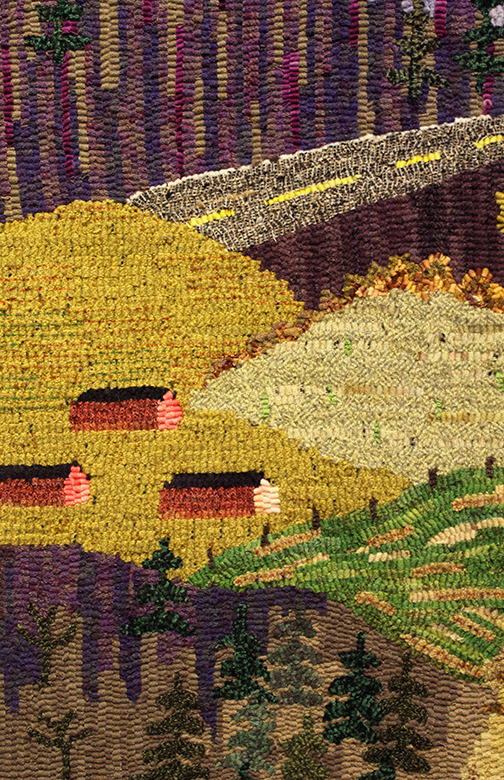
“Progress in the Mountains,” Detail, Susan Feller, 2014
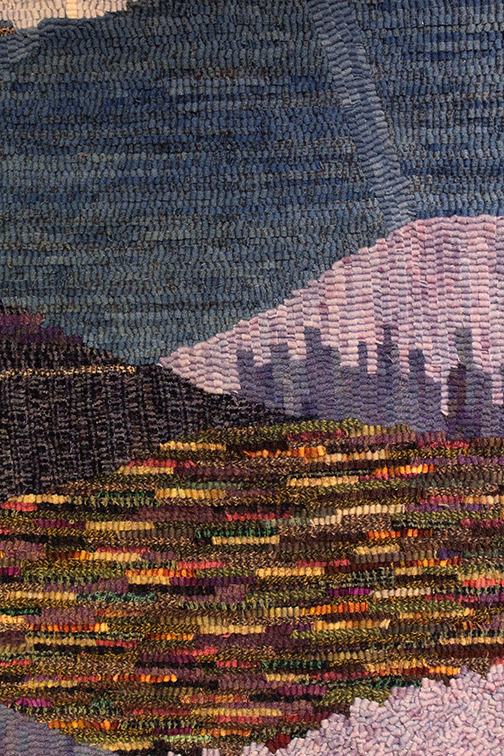
“Progress in the Mountains,” Detail, Susan Feller, 2014

“Progress in the Mountains,” Detail, Susan Feller, 2014

“Progress in the Mountains,” Detail, Susan Feller, 2014
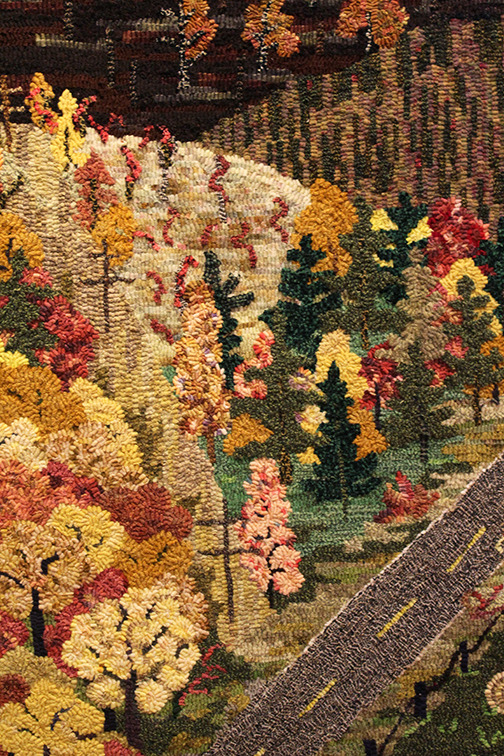
“Progress in the Mountains,” Detail, Susan Feller, 2014
Working from her farm-based studio tucked away in the hills of Hampshire County, fiber artist Susan Feller bridges traditional craft techniques and modern experience. She specializes in rughooking, a historical craft that originated from a need to cover wooden floors with fabric that was available. Now, the time honored technique lends itself to modern design, enabling Susan to “paint” compositions using strips of hand-dyed wool, looping one piece at a time through a backing that is spread taught across a frame. Her subjects range from abstract nature studies to methodically planned patterns, but at the root of them all is a love of handiwork and an enjoyment that stems from the tactile differences in her materials. Also important to Susan is embracing the relationship between the functionality of traditional crafts and the pleasing aesthetics achievable through the medium, offering an opportunity for individuals to both see and physically experience her work. Her rugs and runners in particular are made with the intention of being used for generations on the floor, table, or wall, and her visual design choices often proffer a concept that is best experienced through physical use. She invites viewers to walk down a path of her making, or enjoy the translation of nature’s beauty into unique fiber compositions.
More recently, Susan has begun to push her modern craft concept into new territories, imbuing her pleasing aesthetic designs with important messages that are relevant to contemporary society. Such is the case with her piece “Progress in the Mountains,” which is currently on view as a part of Tamarack’s annual “The Best of West Virginia Open Juried Exhibition.” The seven foot long handhooked runner at first offers a beautiful representation of the West Virginia landscape, characterized by a dramatic vertical stacking of mountains, valleys, and roadways. However, the composition is steeped in symbolism, and is a way in which Susan can shed light on the numerable environmental issues that West Virginia residents are faced with every day. The result is a visual study focused on the duality of modern progress – the inevitable give-and-take relationship between the advancement of human industry and natural resource consumption. It is a dynamic that has been present in Appalachia for generations and a reality that forces residents to consider the costs of industrial conquest. On her blog and in her artist statement, Susan delves into the motifs she incorporated into her utilitarian design, giving us a step by step tour of progress’s sliding scale:
The runner was composed to be used on the floor in a hallway, inviting a walk along the road up to the mountain top and turning back down. Or if hung on a wall, the viewer is invited to step onto the road exploring the scenes along the way up to the bright active skyline. It is framed formally emphasizing the artwork within…
1. Envision the impact on geography, environment, culture and community the human drive for progress has had on the natural resources of West Virginia (a micro example of the globe). Major interstate highways create jobs for the construction industry, allow quicker access to towns and destinations for tourism and commerce, but disturb migration paths, feeding and lodging habitat for fauna and flora.
2. Corporate farming in the form of one breed of cattle, poultry buildings for thousands, and processing plants for each creates excess of waste which needs to be distributed by vehicles to wider destinations or processed into a stable by-product.
3. Lumbering of the forests, many of which were contract planted for the pulp or board feet affects the terrain. The undergrowth is necessary to keep erosion from happening, contributing to pollutants in the rivers. Slow traffic from lumber trucks is alleviated with the new highway system.
4. Coal mining strips the tops of mountains to find the veins, moving the waste often into headwaters of small streams which will run into the major river systems. But the coal is used to create electricity for the metropolitan population’s requirements to communicate, work, entertain. The power lines to distribute the energy create wide cuts in direct paths economical for the corporations taking years of negotiating with landowners, environmentalists, historians and politicians but eventually “for the good of the majority” being implemented.
5. Wind turbines line the highest ridge lines feeding the energy generated into those power lines again going out of our state to the metropolitan region. Although a regenerable resource (wind) the effect on birds’ migratory paths is being studied.
In “Progress,” Susan expertly fuses function, beauty, and education, creating a versatile experience for those who see her work. The concept is also a way in which Susan can share her thoughts and feelings in a manner that suits her best, planting seeds for her viewers, hopefully provoking thought and curiosity. “My personality tends toward positive, inclusive, and supportive of our natural resources,” Susan explains. “[While] others use bold statements, visually and verbally, I am more comfortable creating subliminal messages in my artwork and verbalizing my passions…I have heard responses to my work ranging from an immediate smile, to beginning a conversation on environmental issues. If my work raises questions, it has accomplished my goal.”
Susan’s piece will be on view in the David L. Dickirson Fine Arts Gallery until August 9. To learn more about her and her other works, visit her website at http://artwools.com/
explorations: columbia, south carolina (and en-route).
all for sale at http://society6.com/aliciaheximer
Post link


